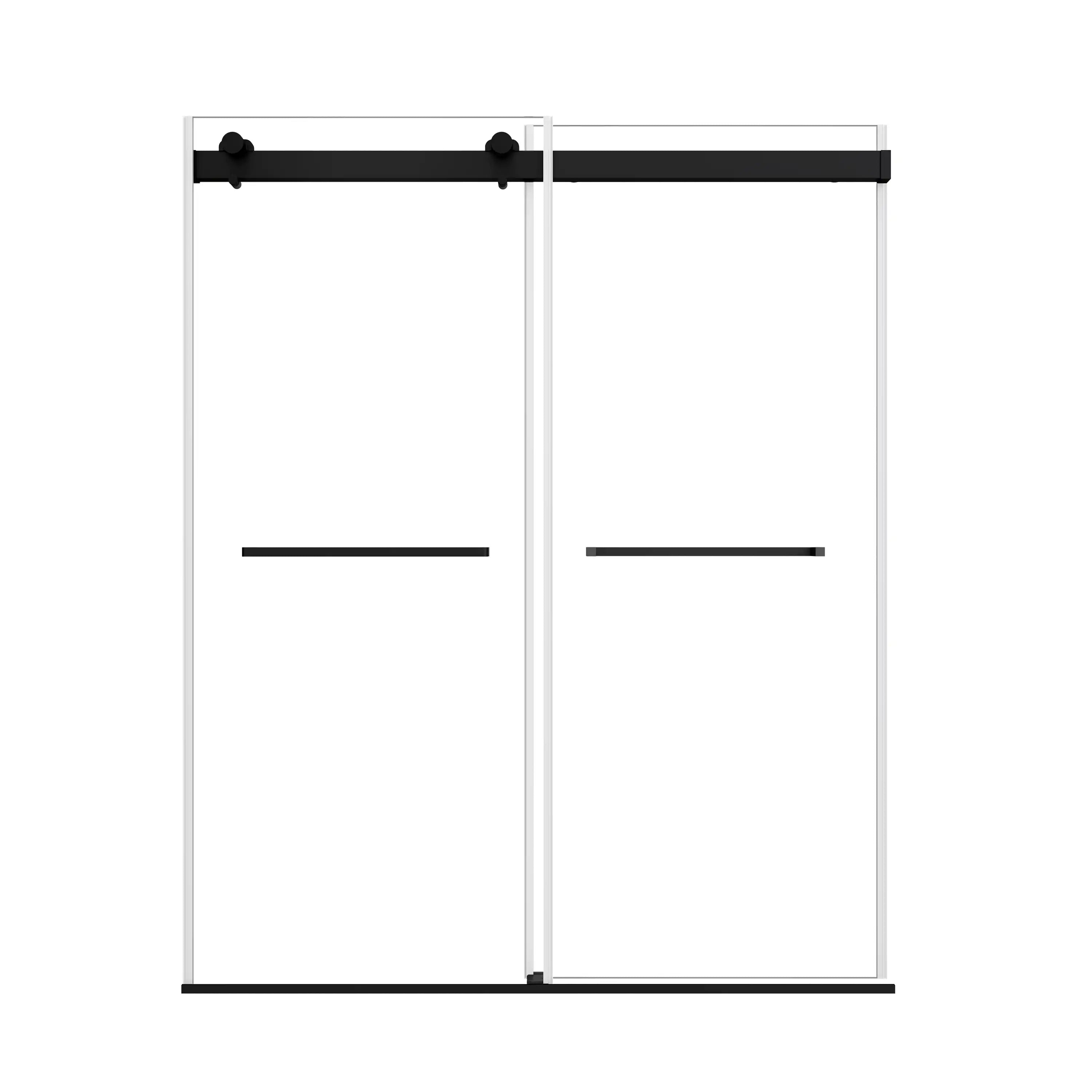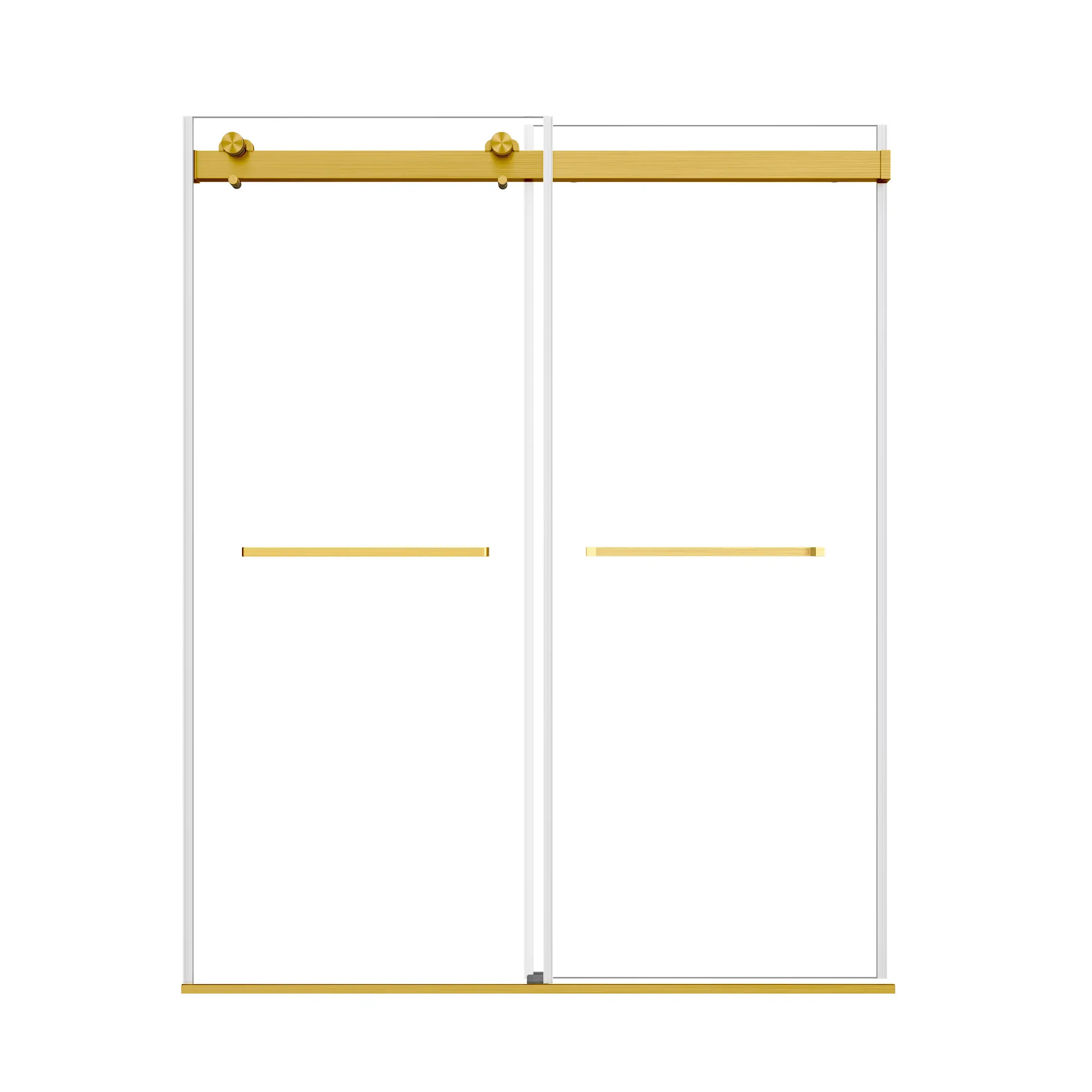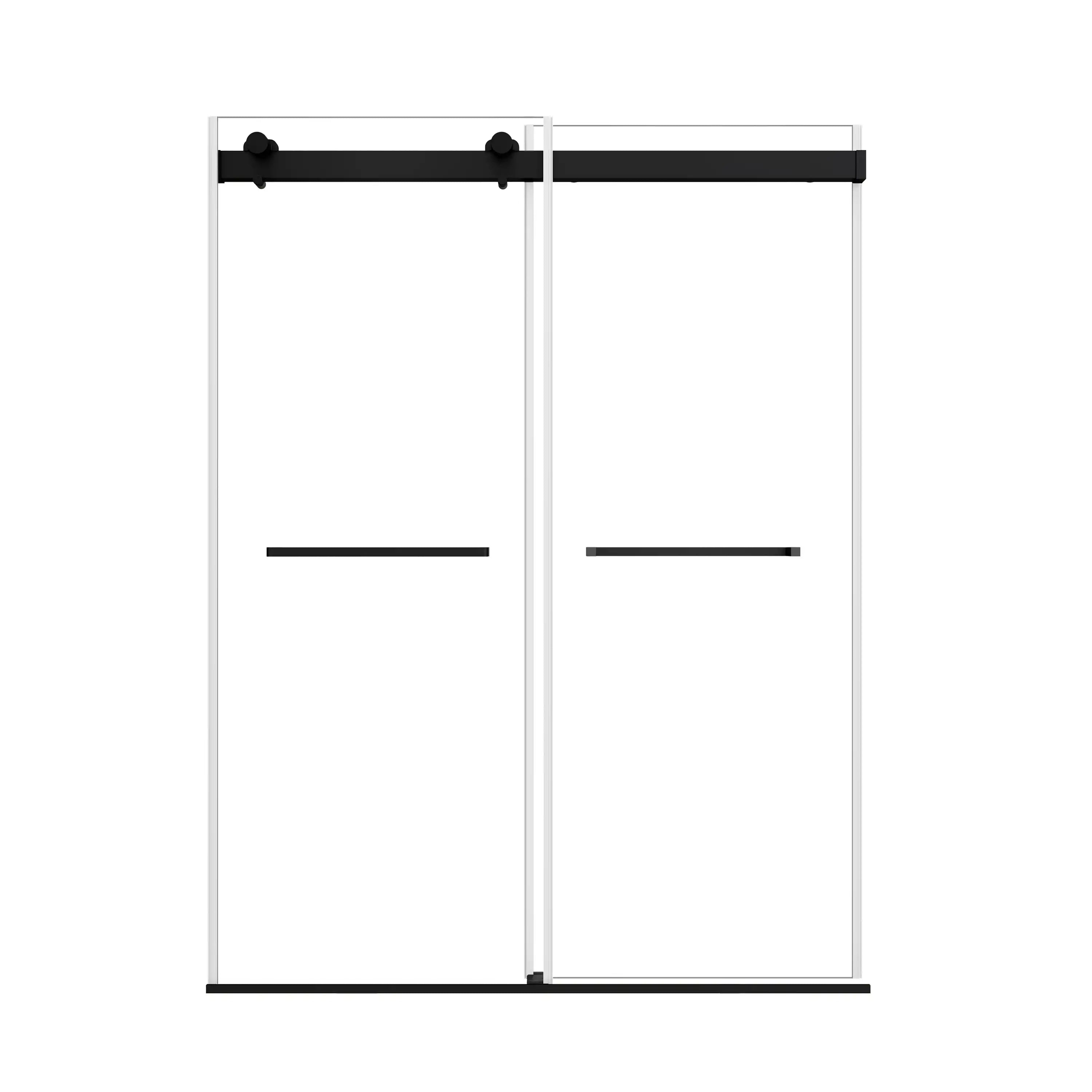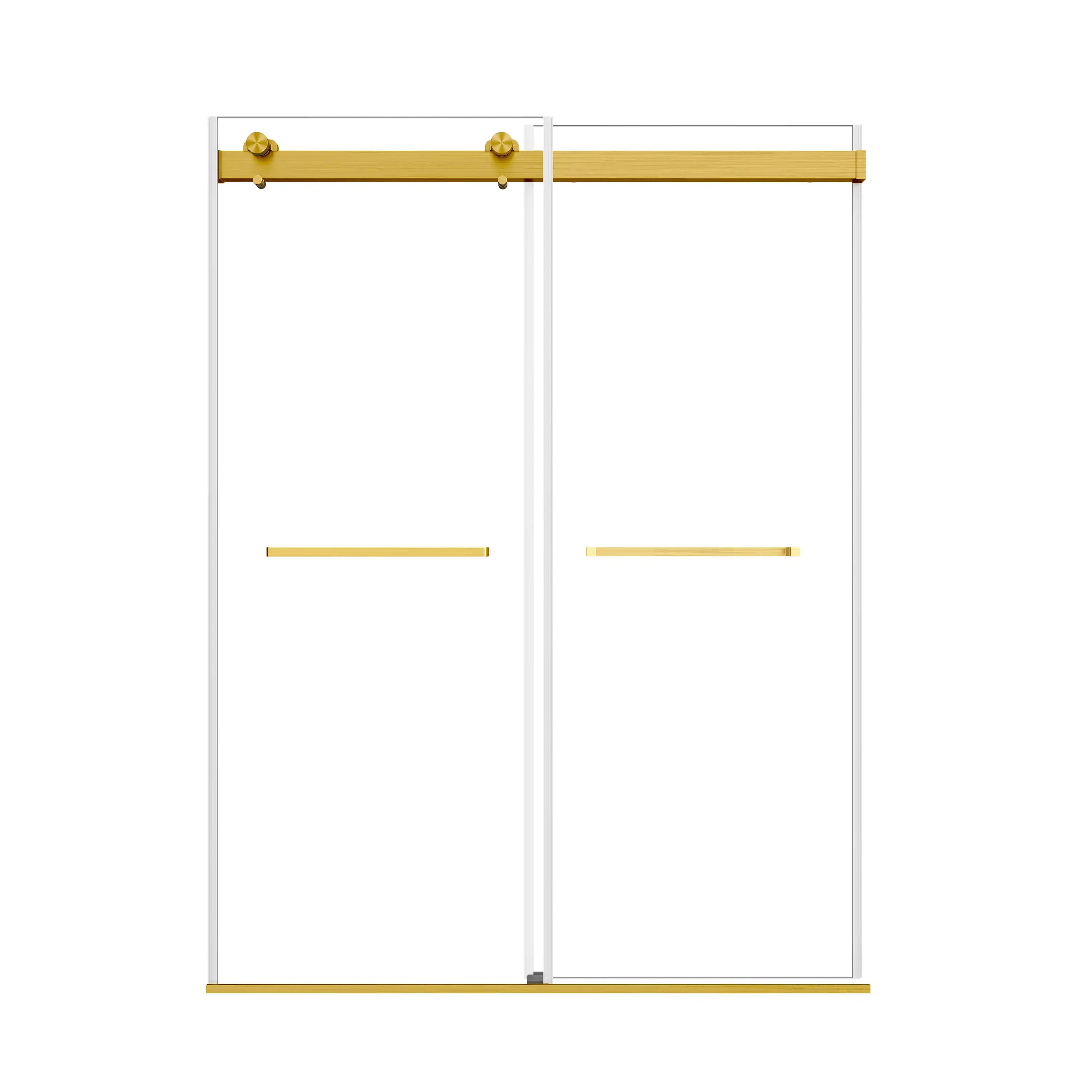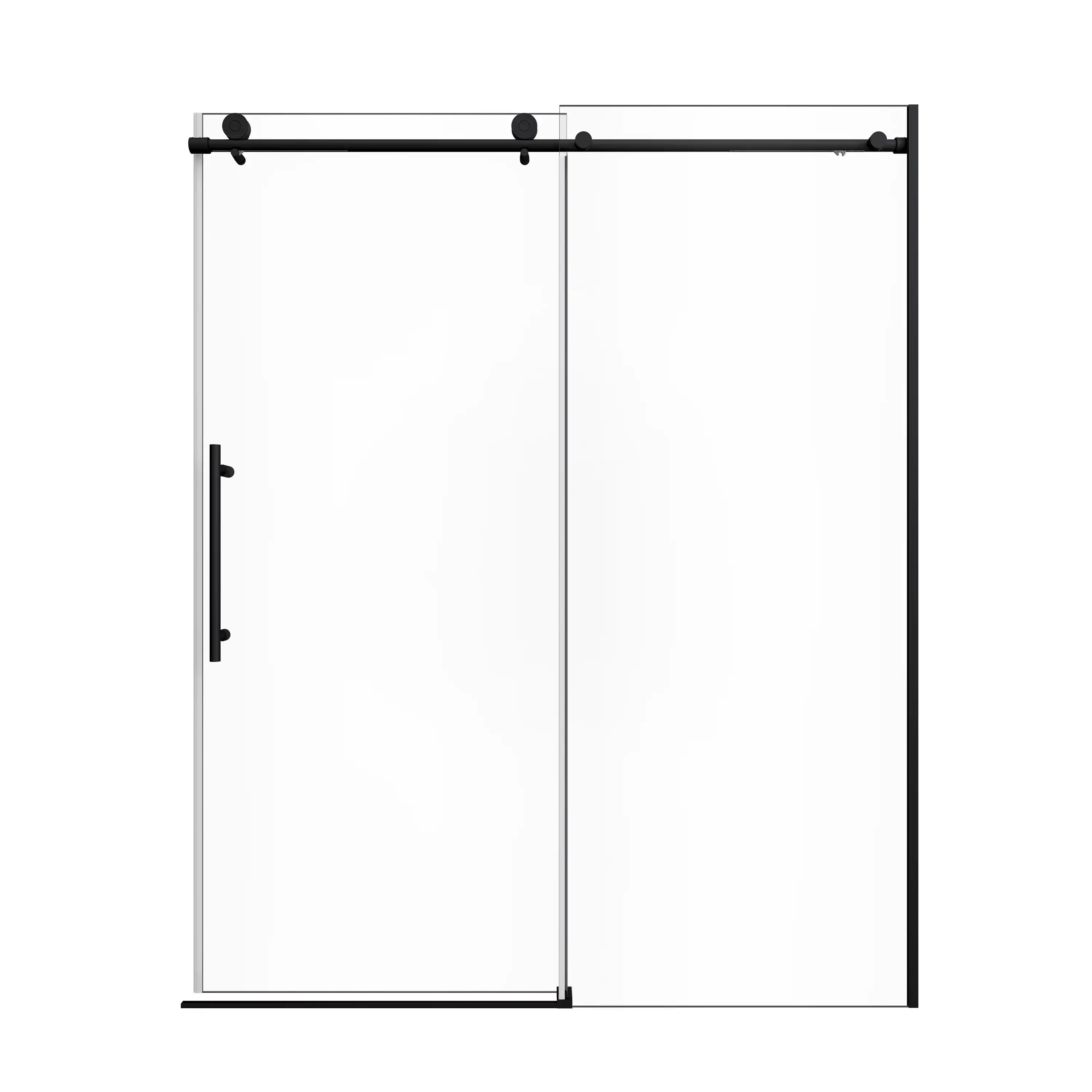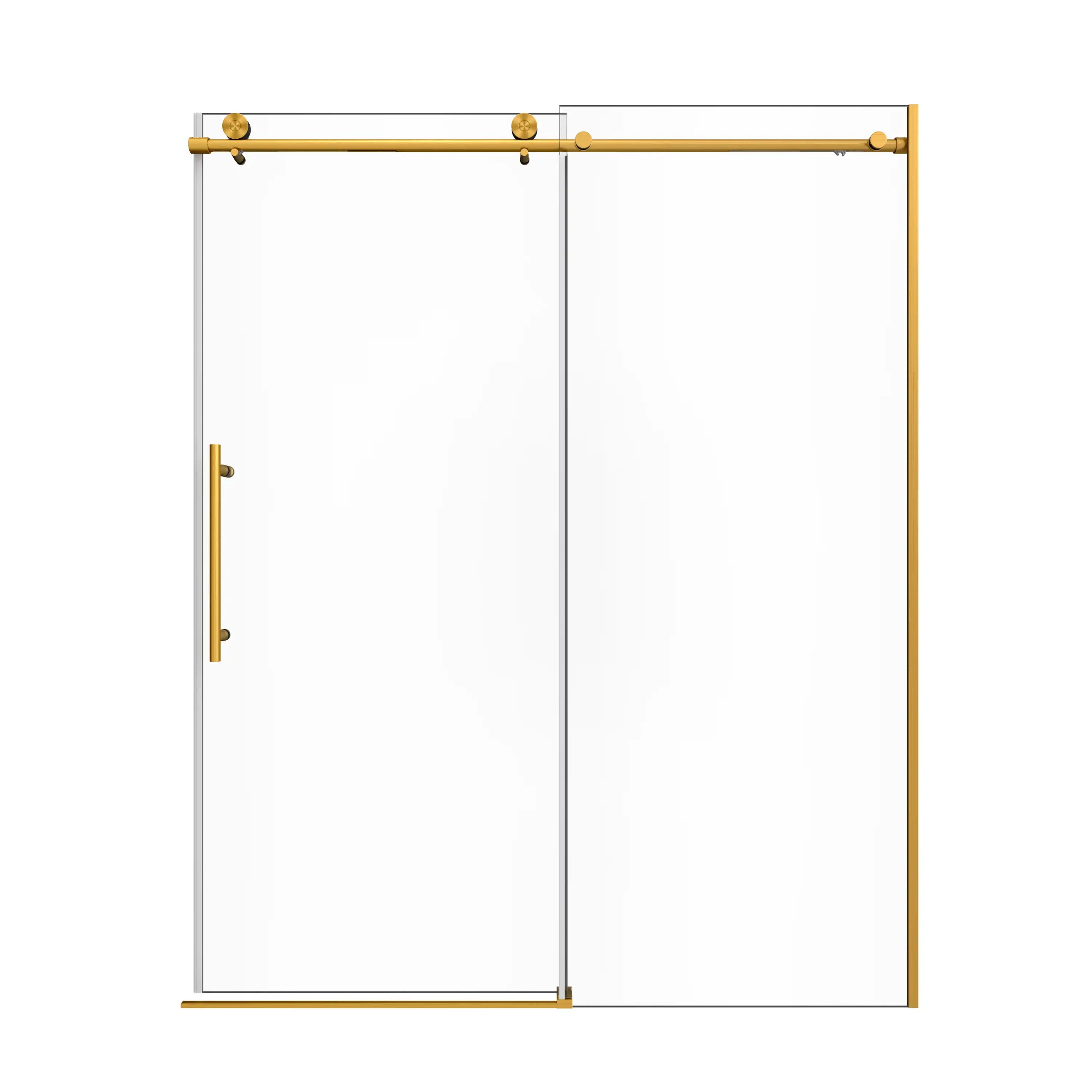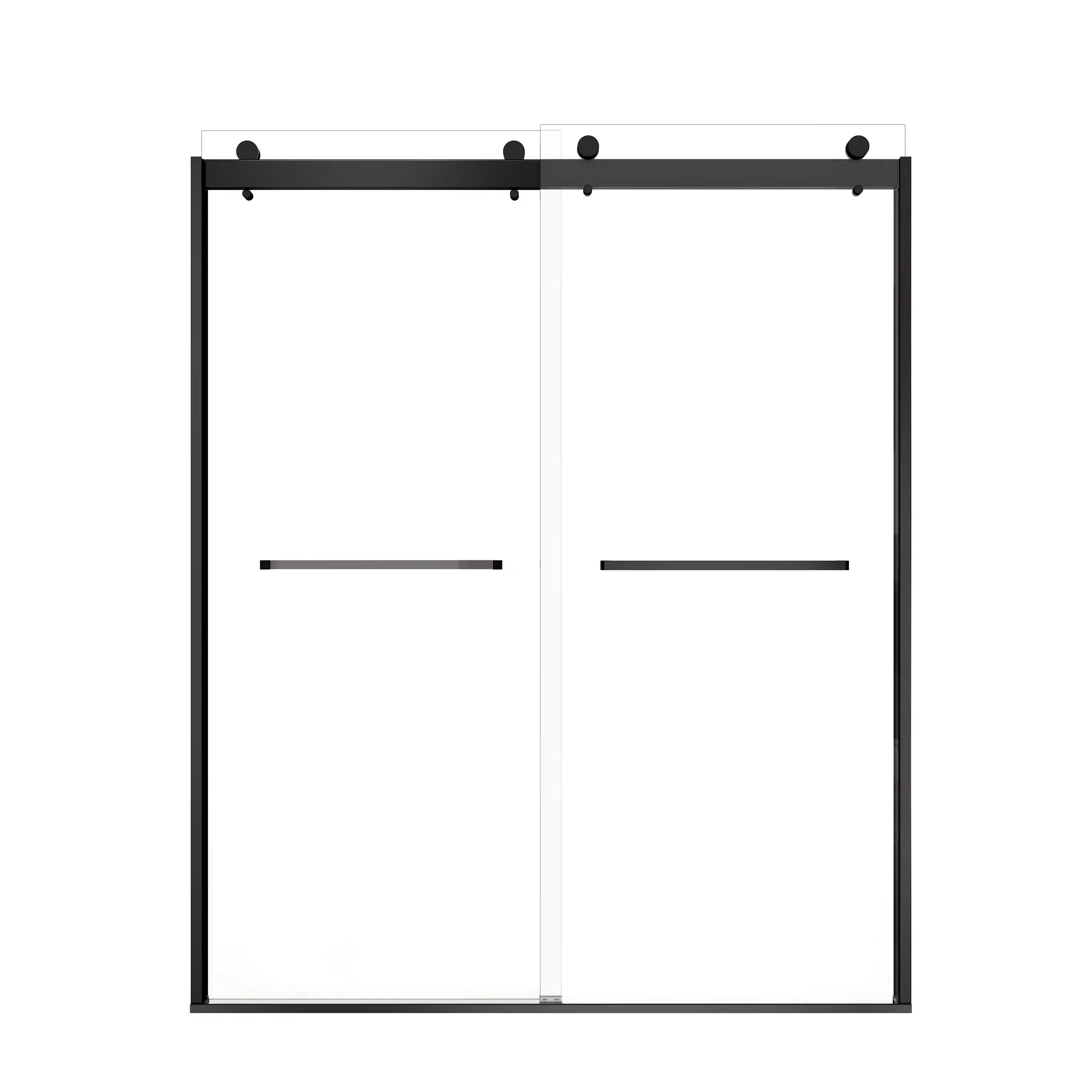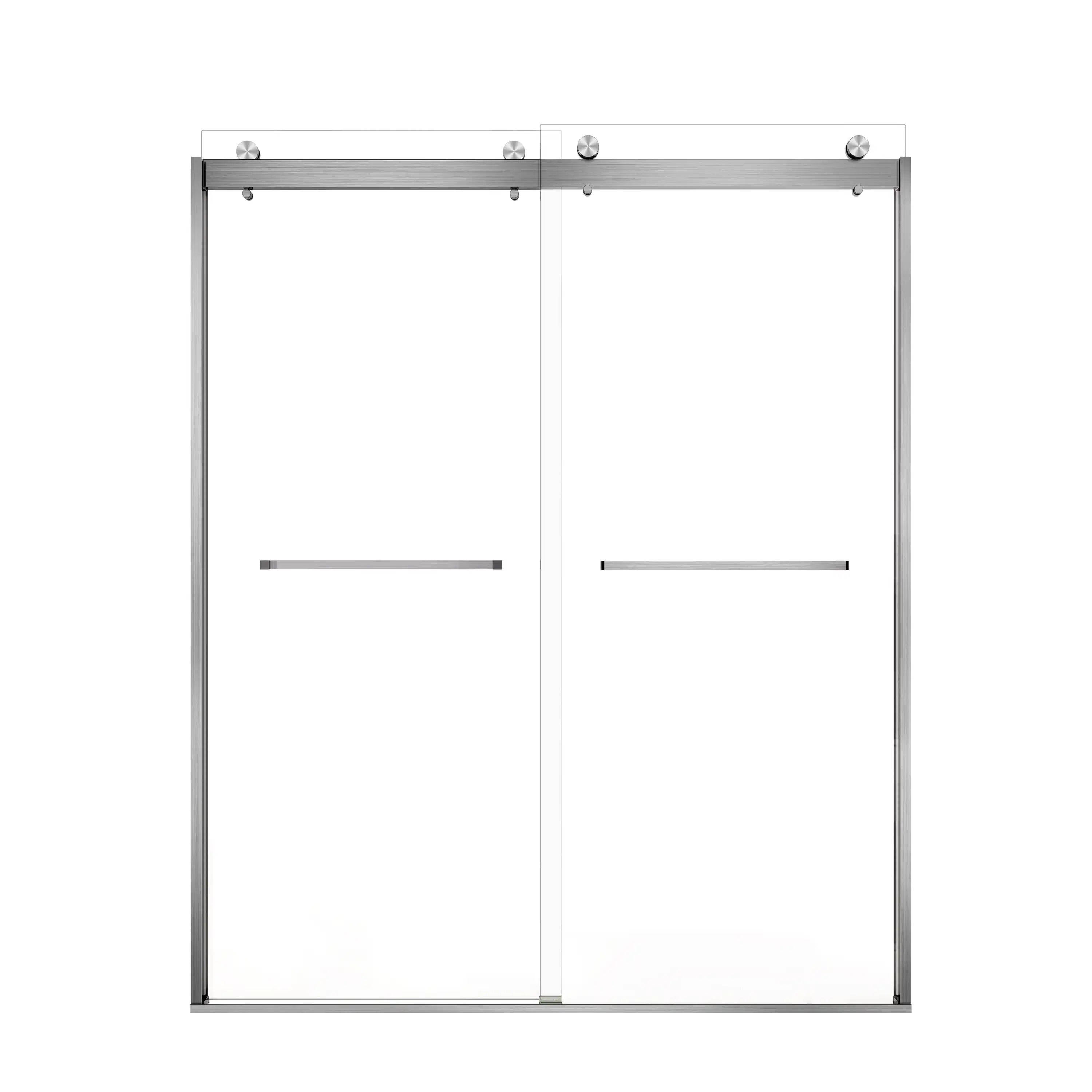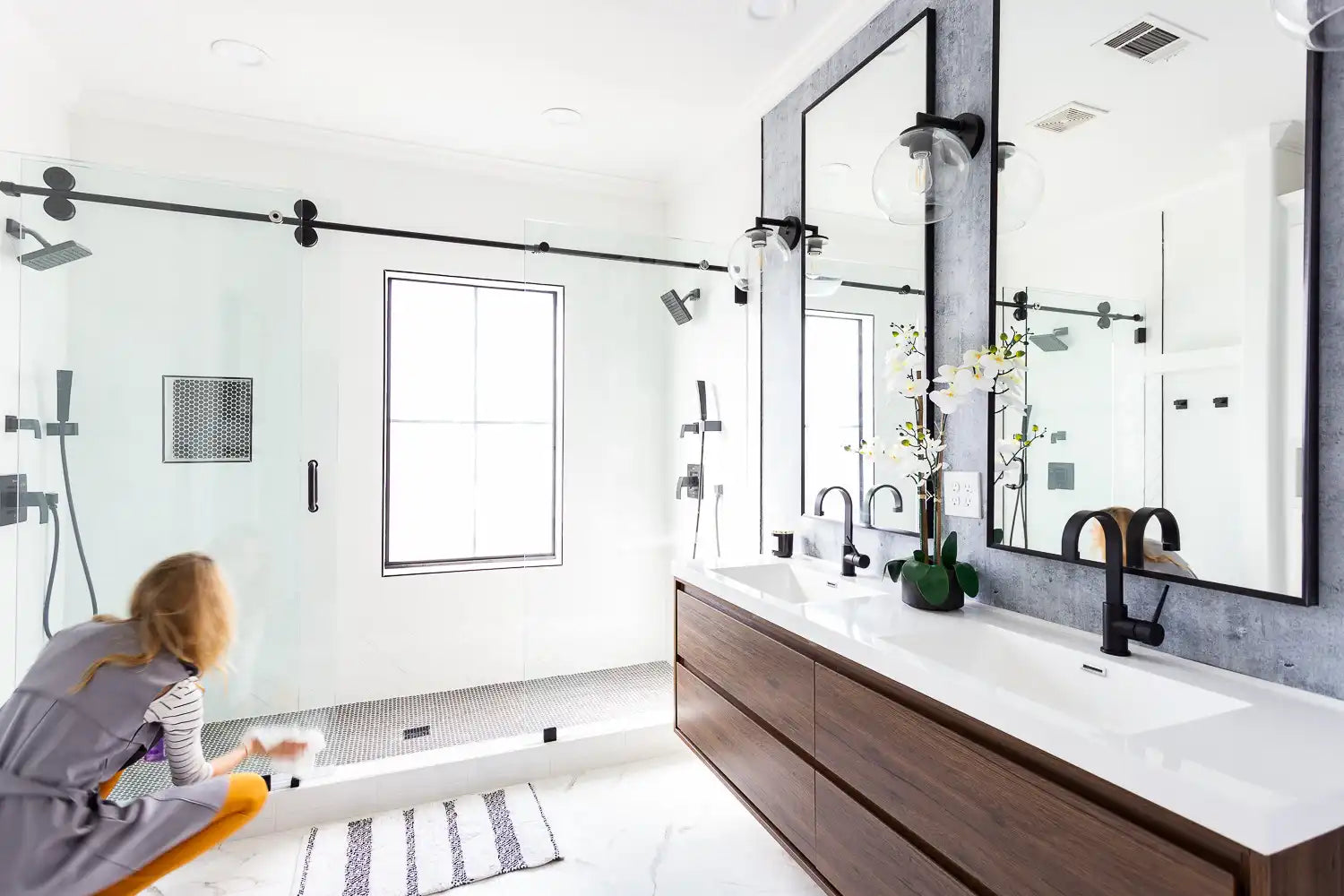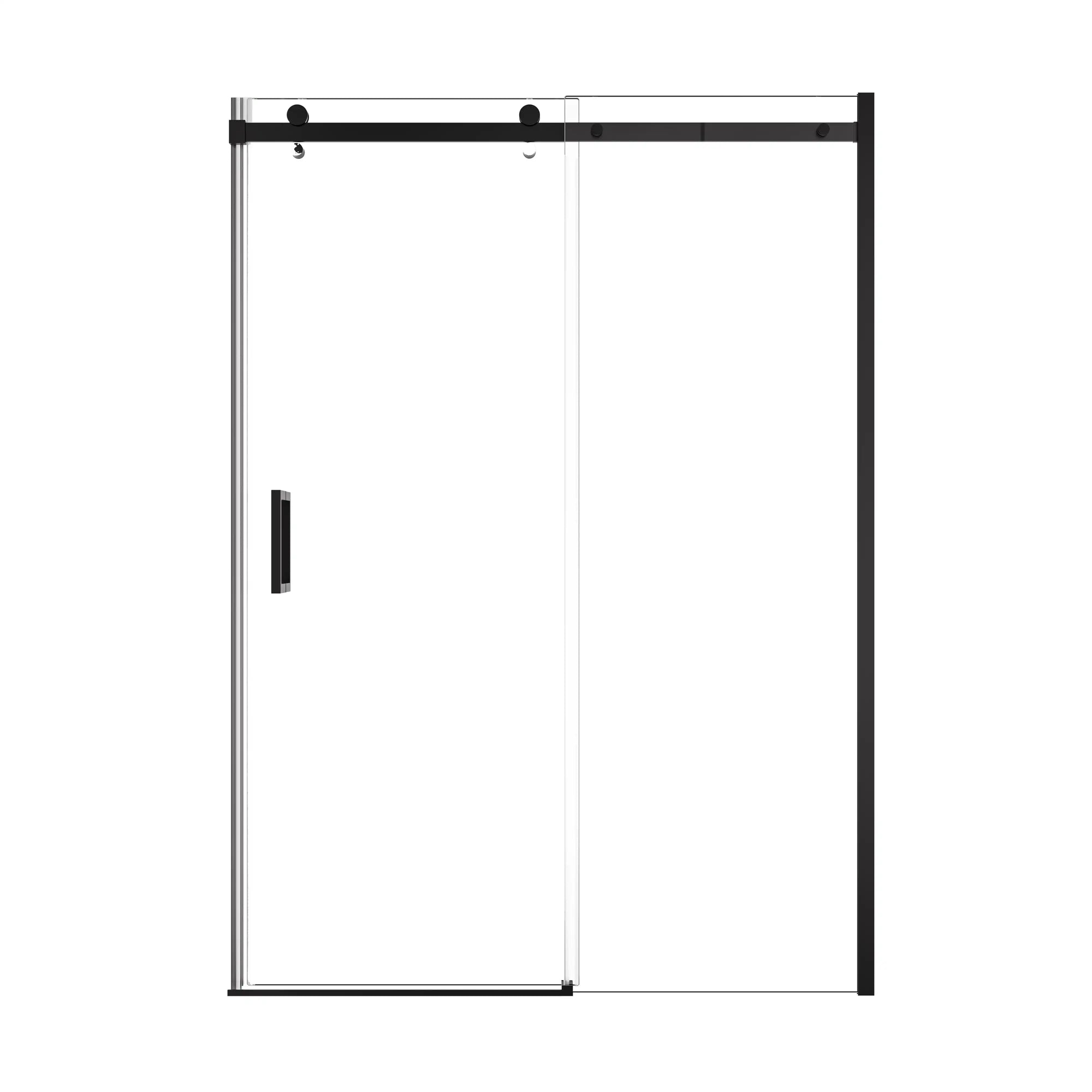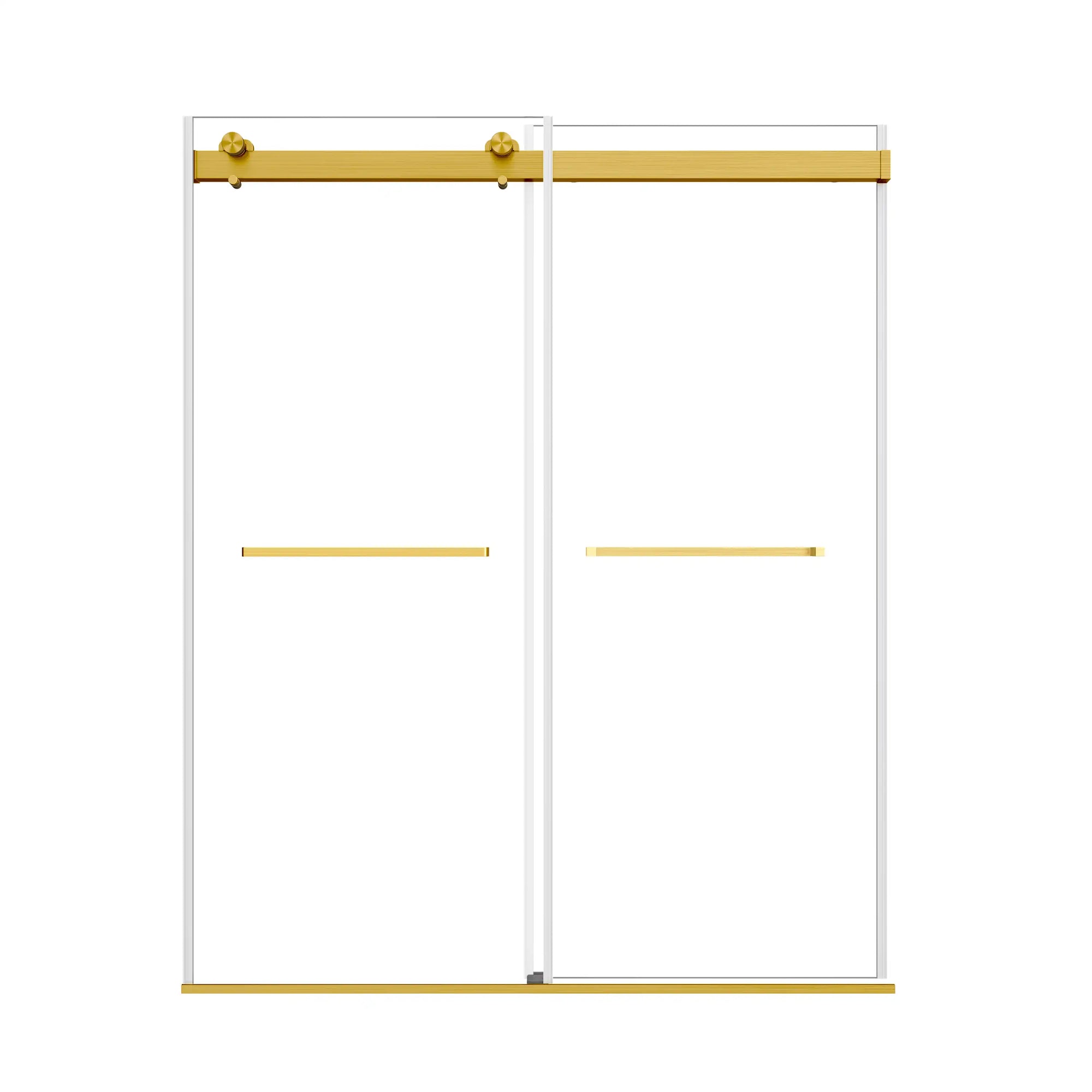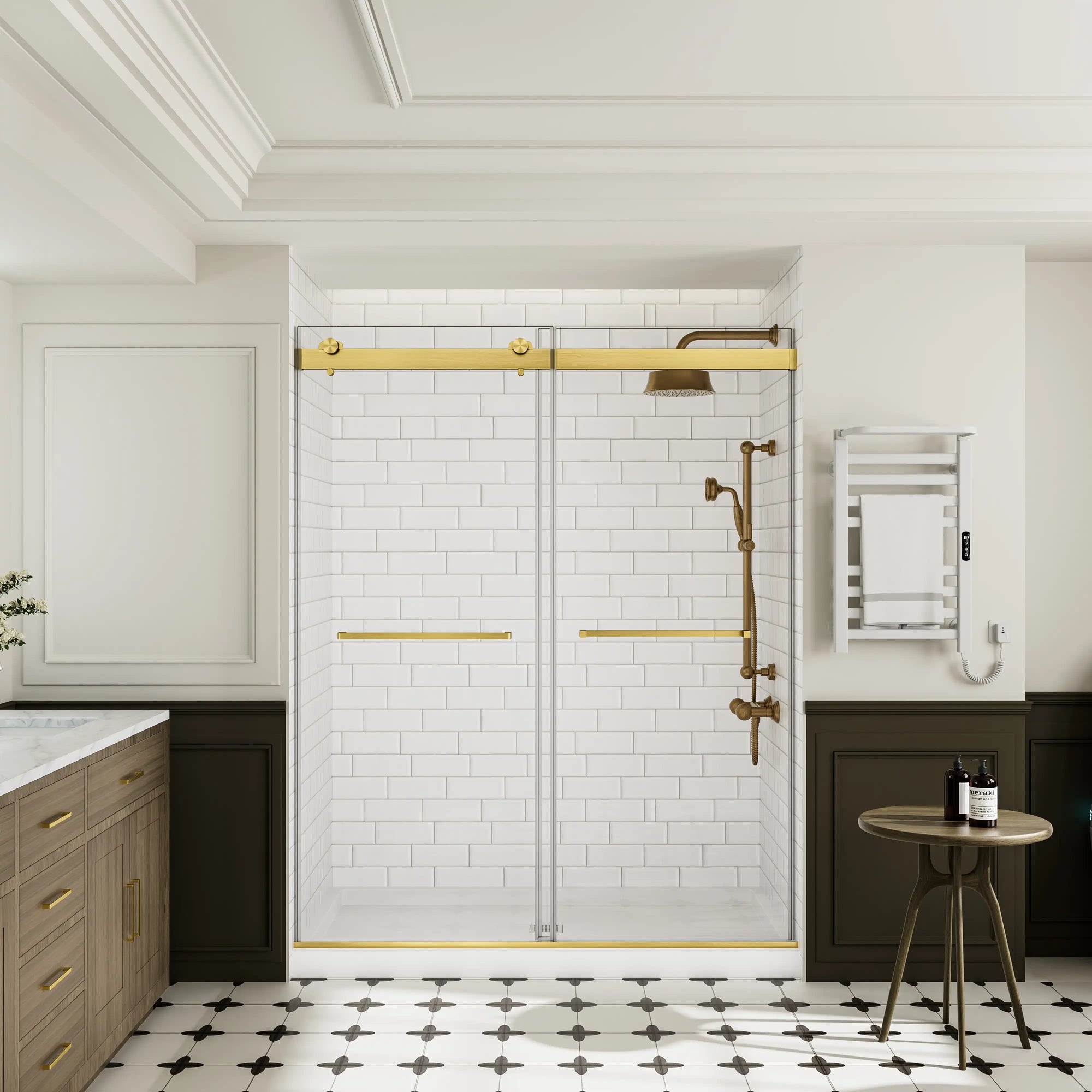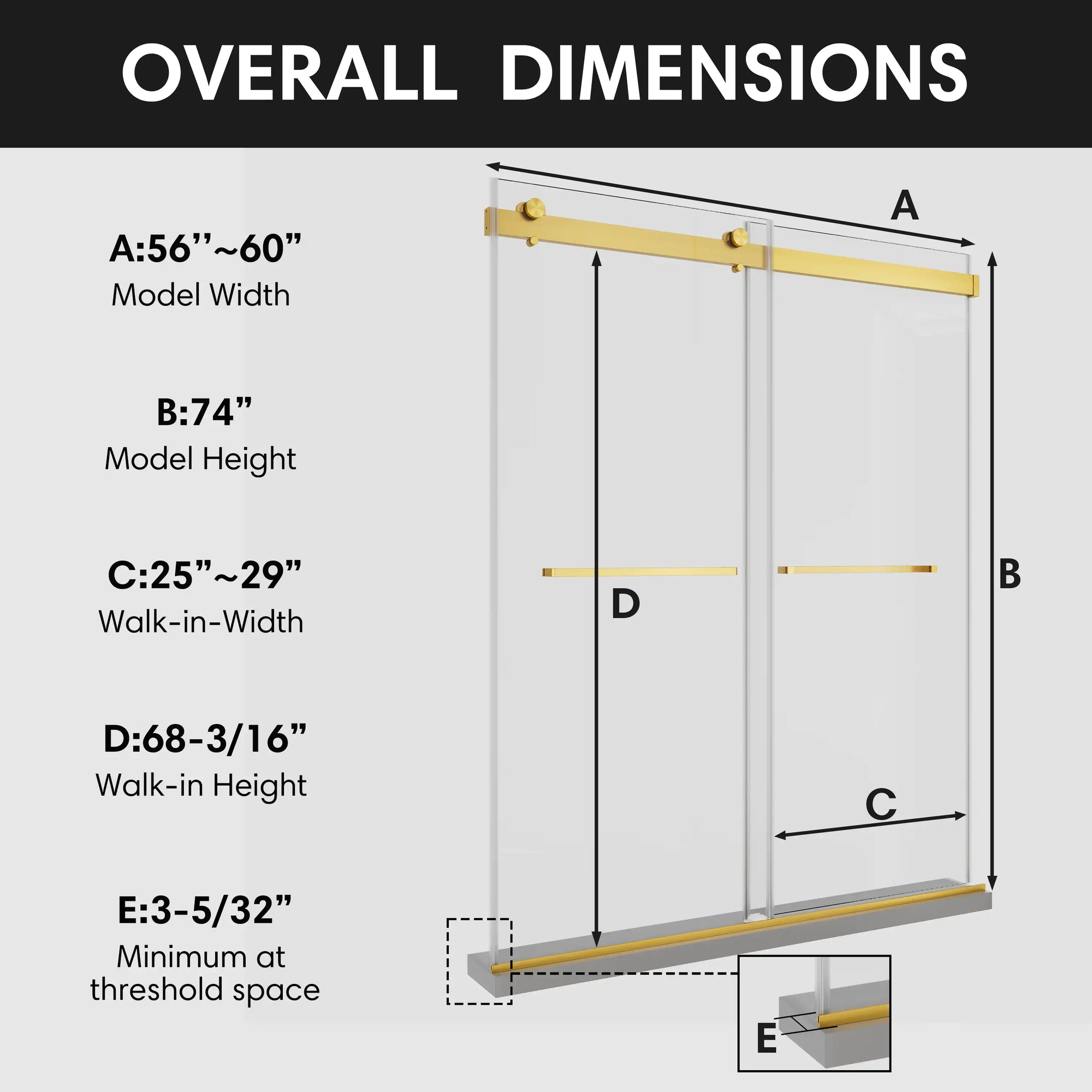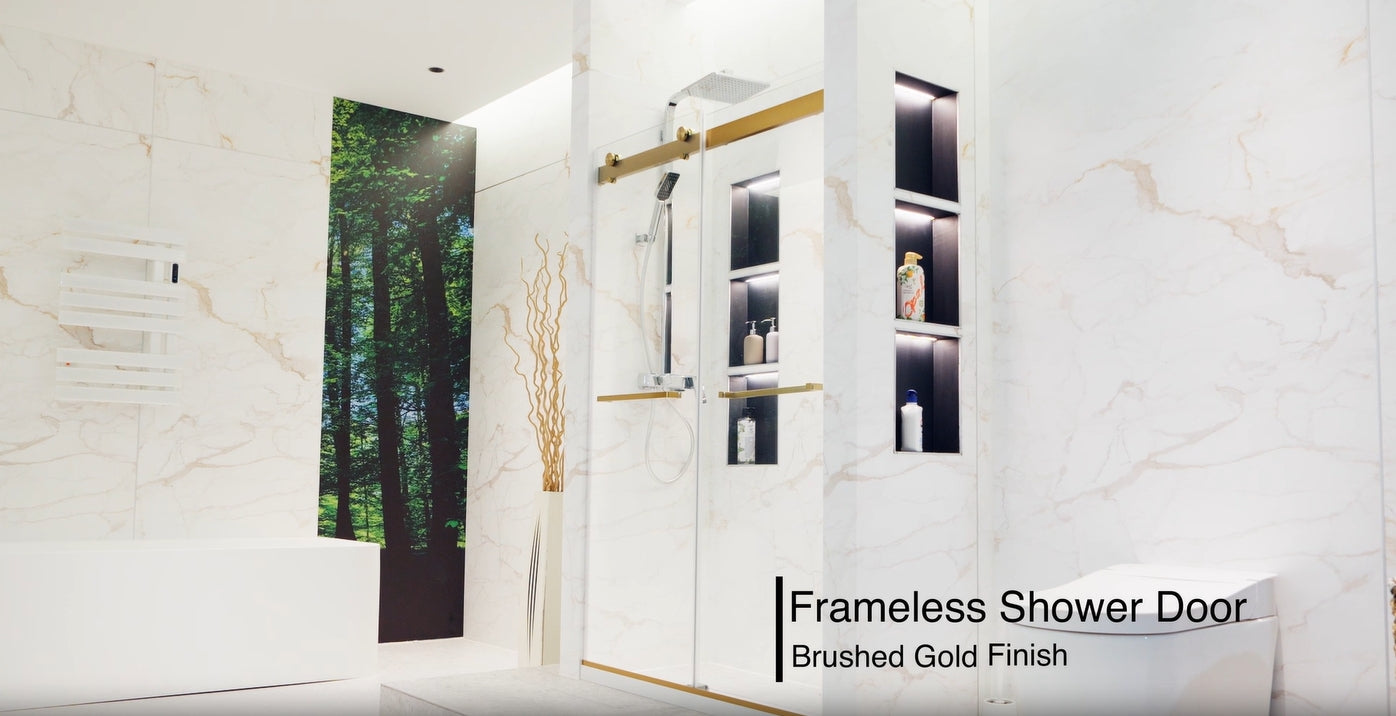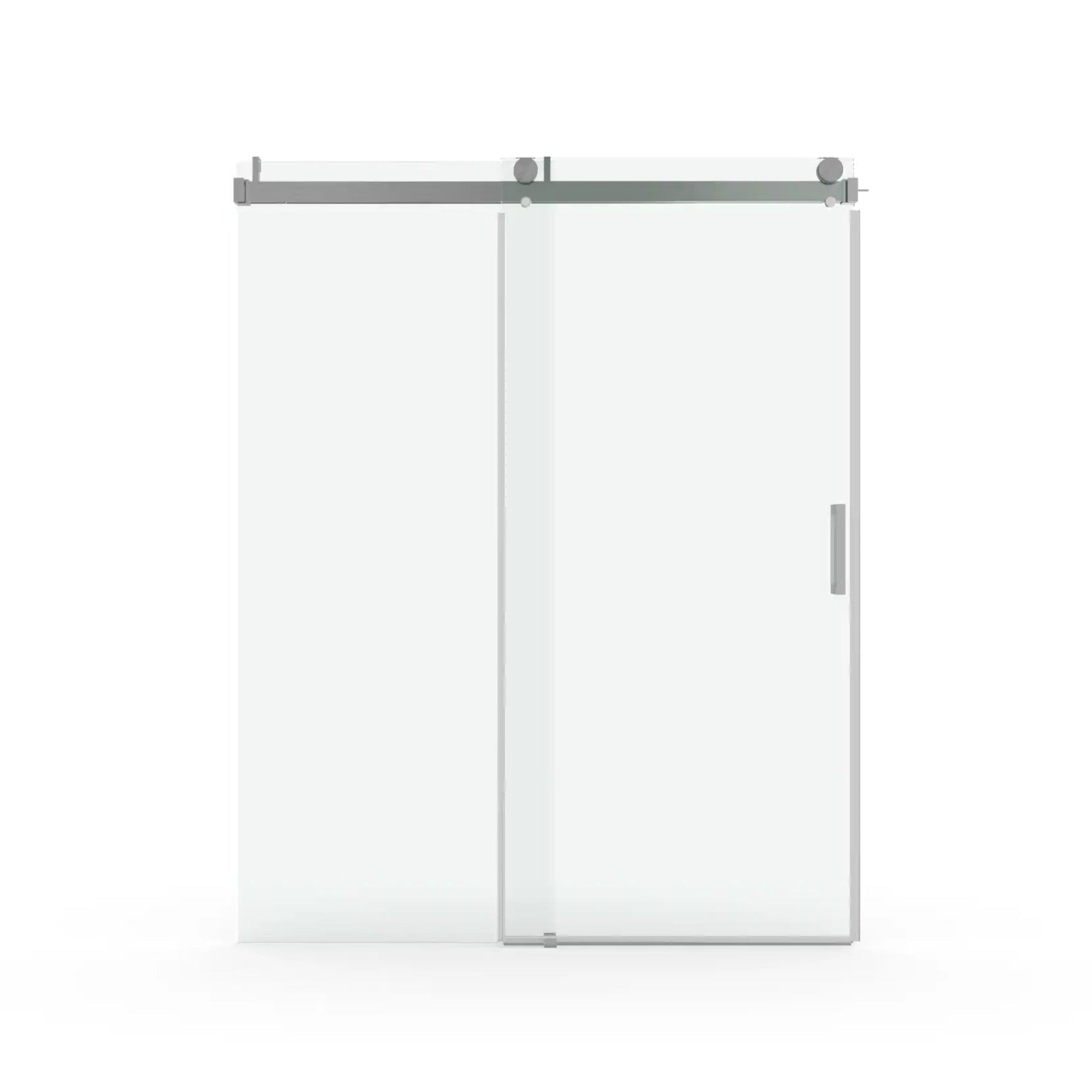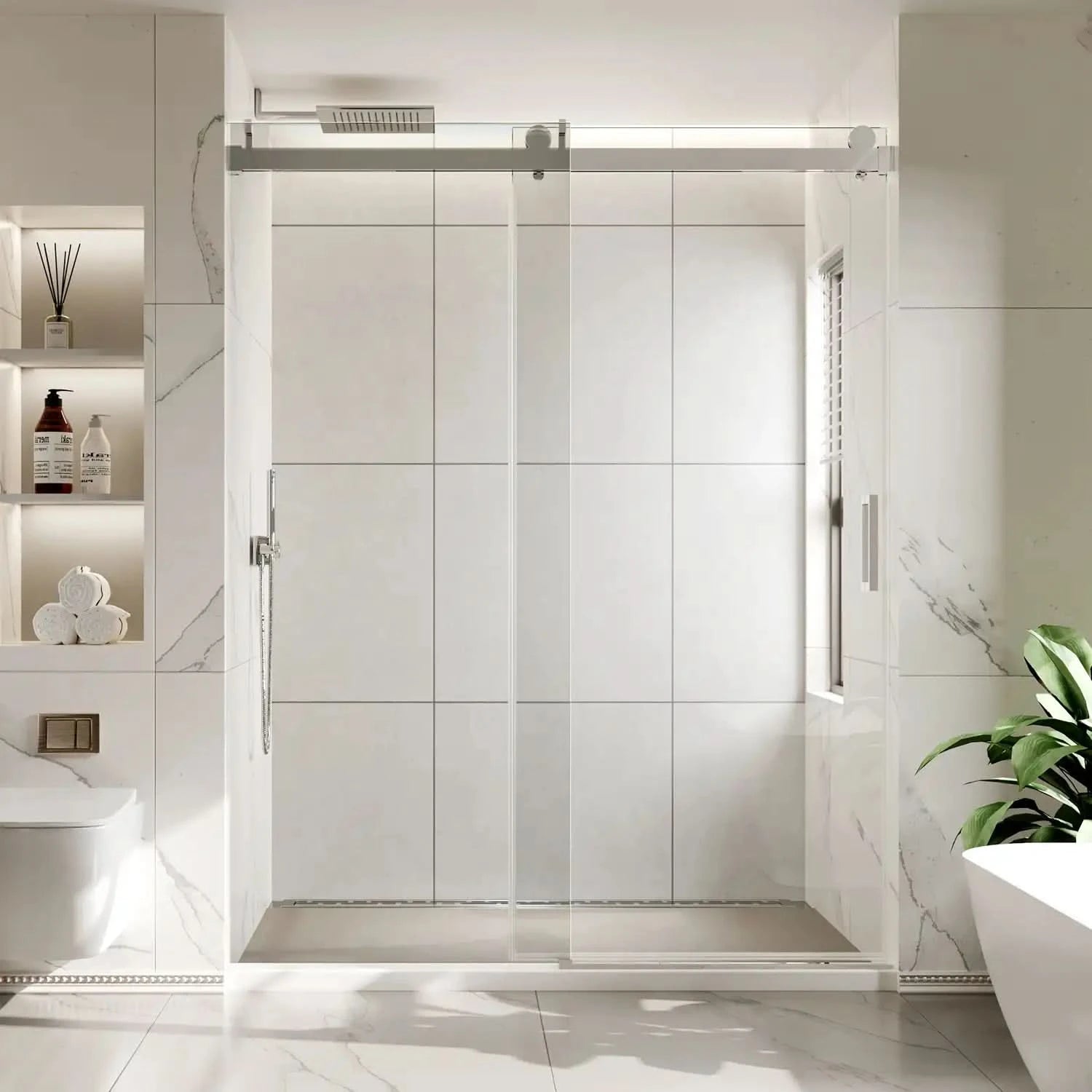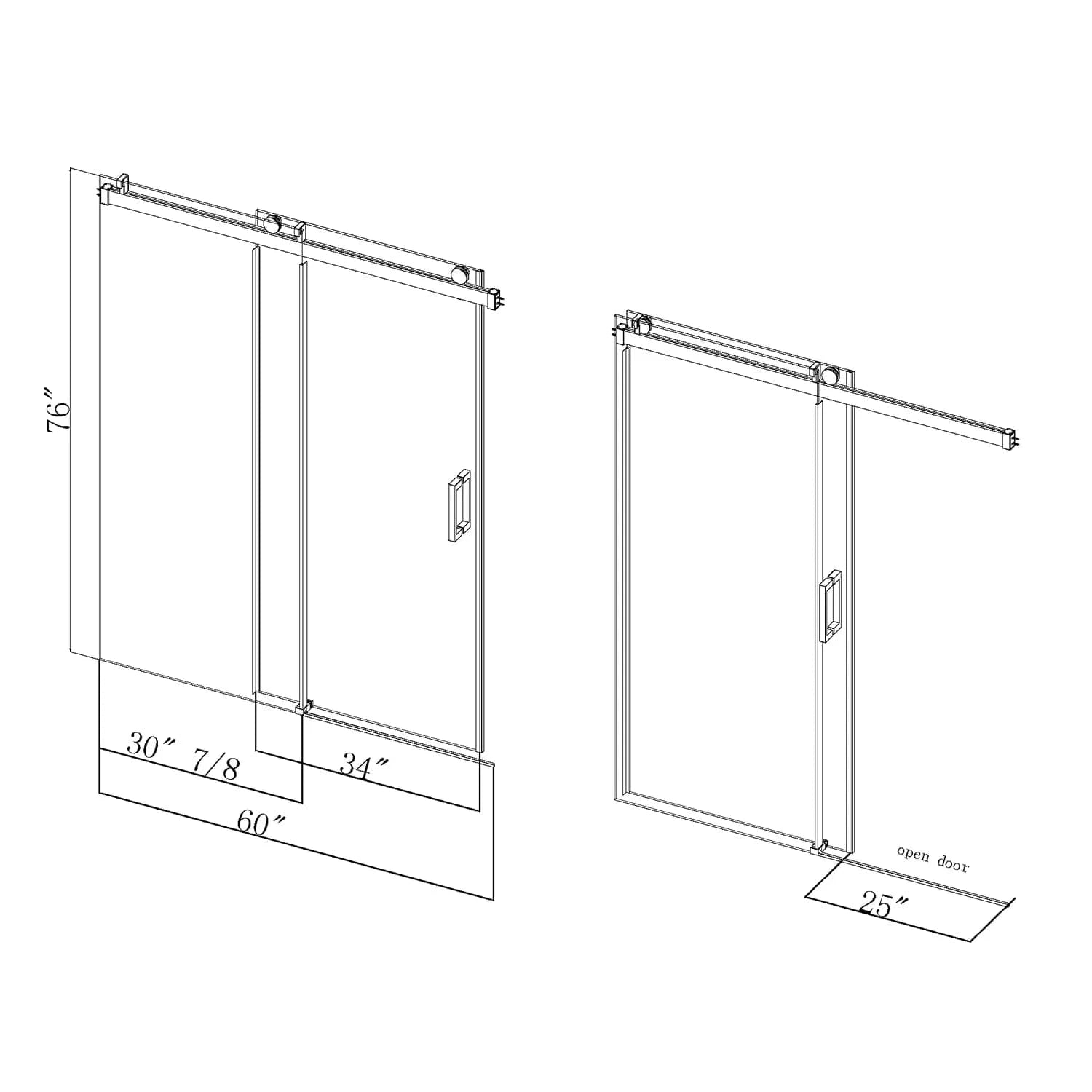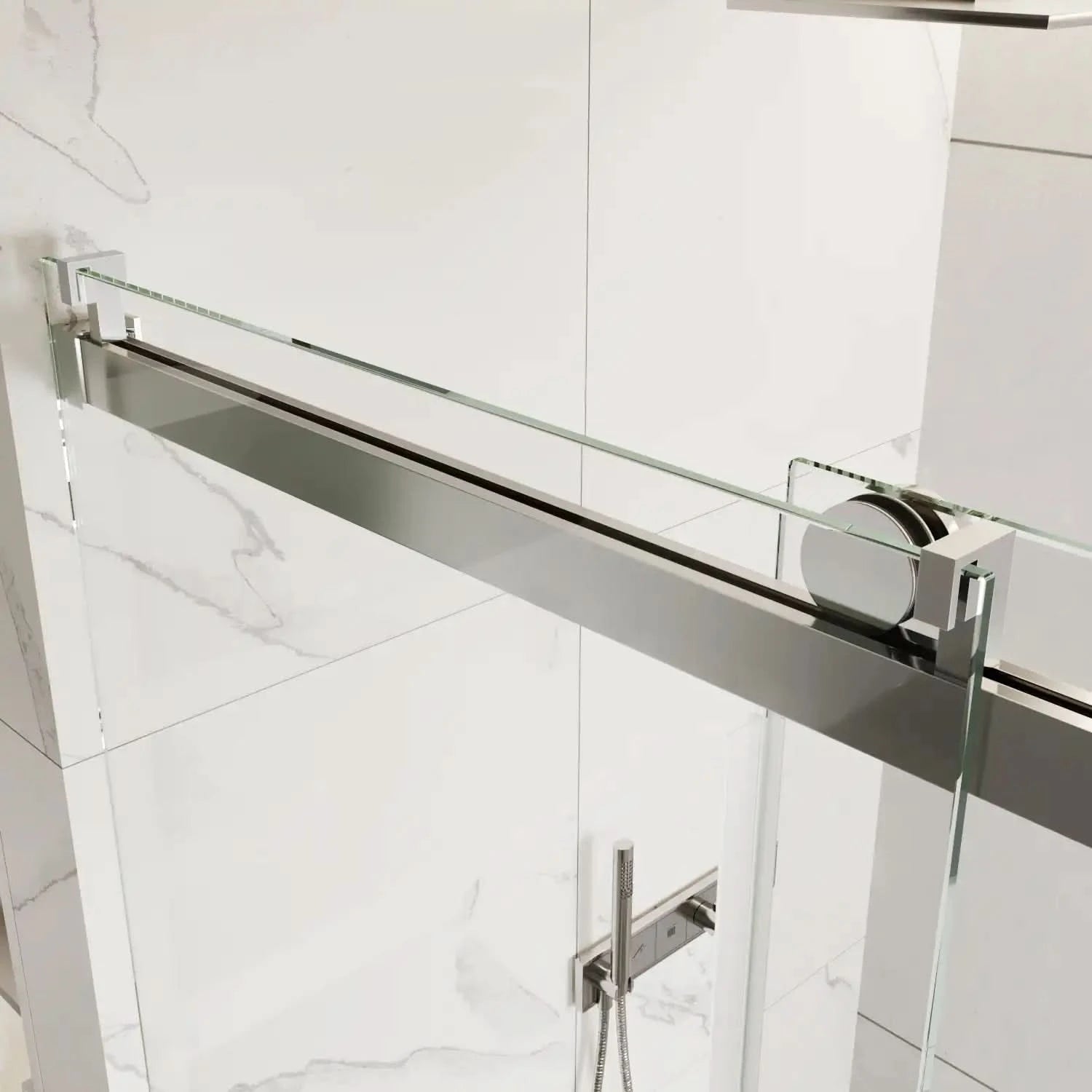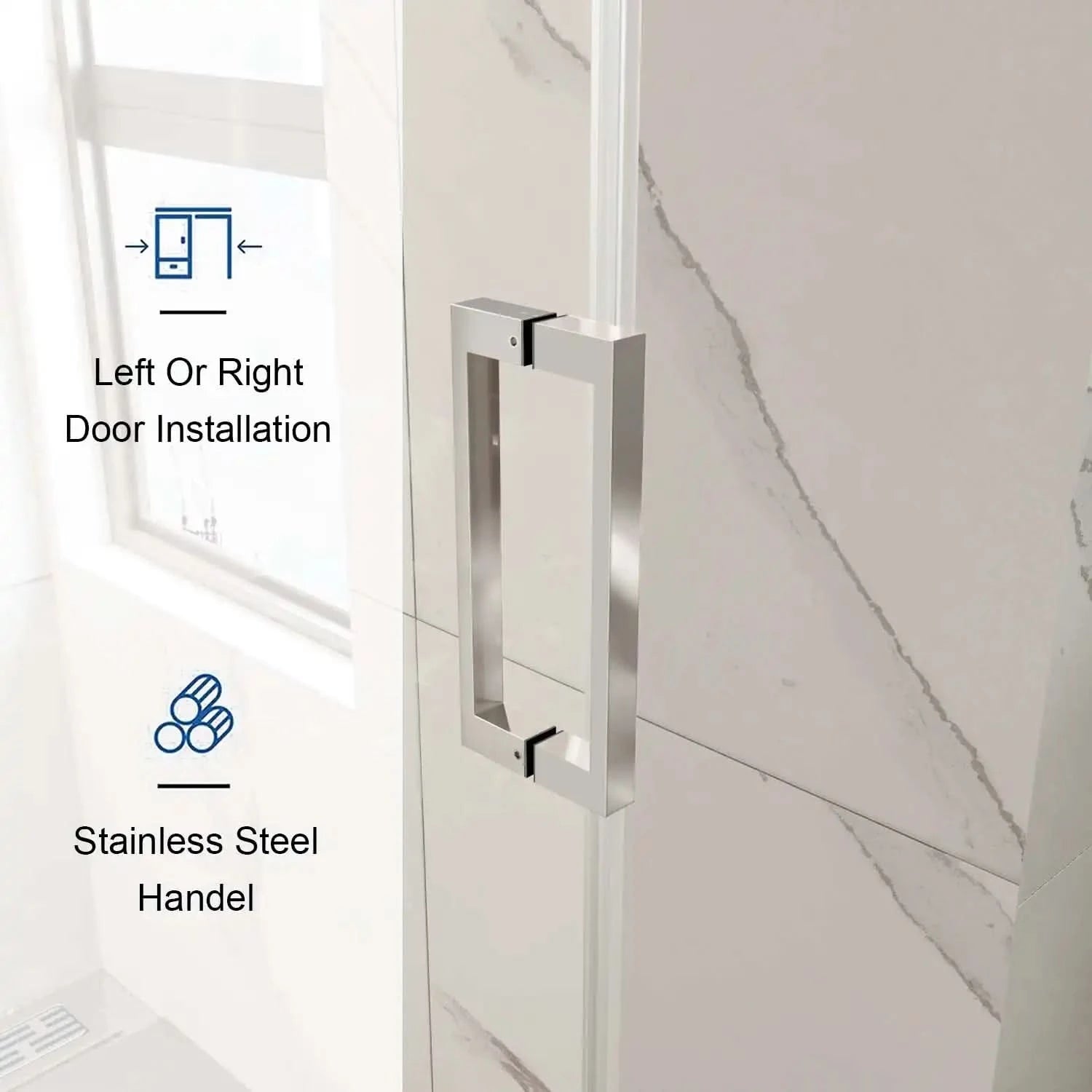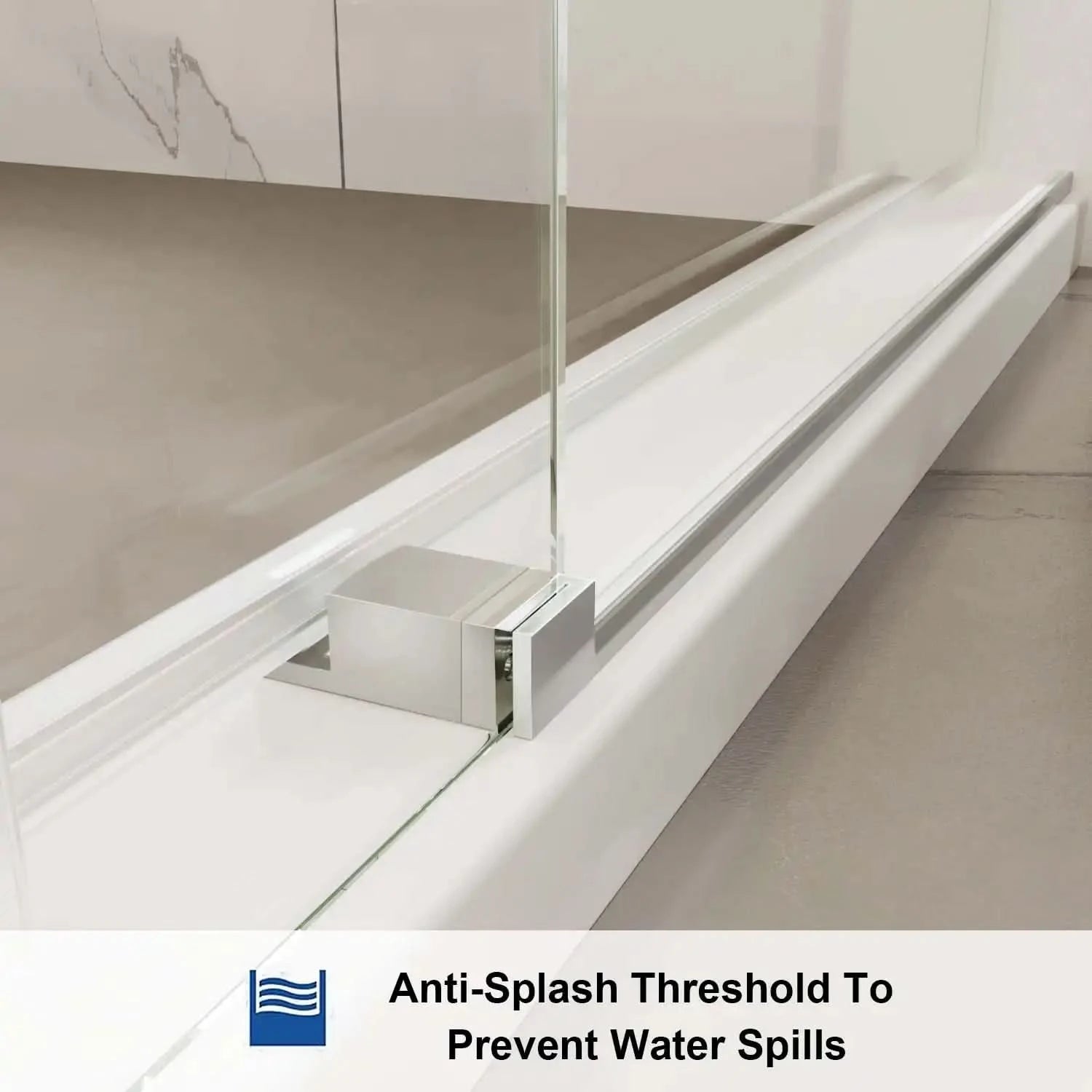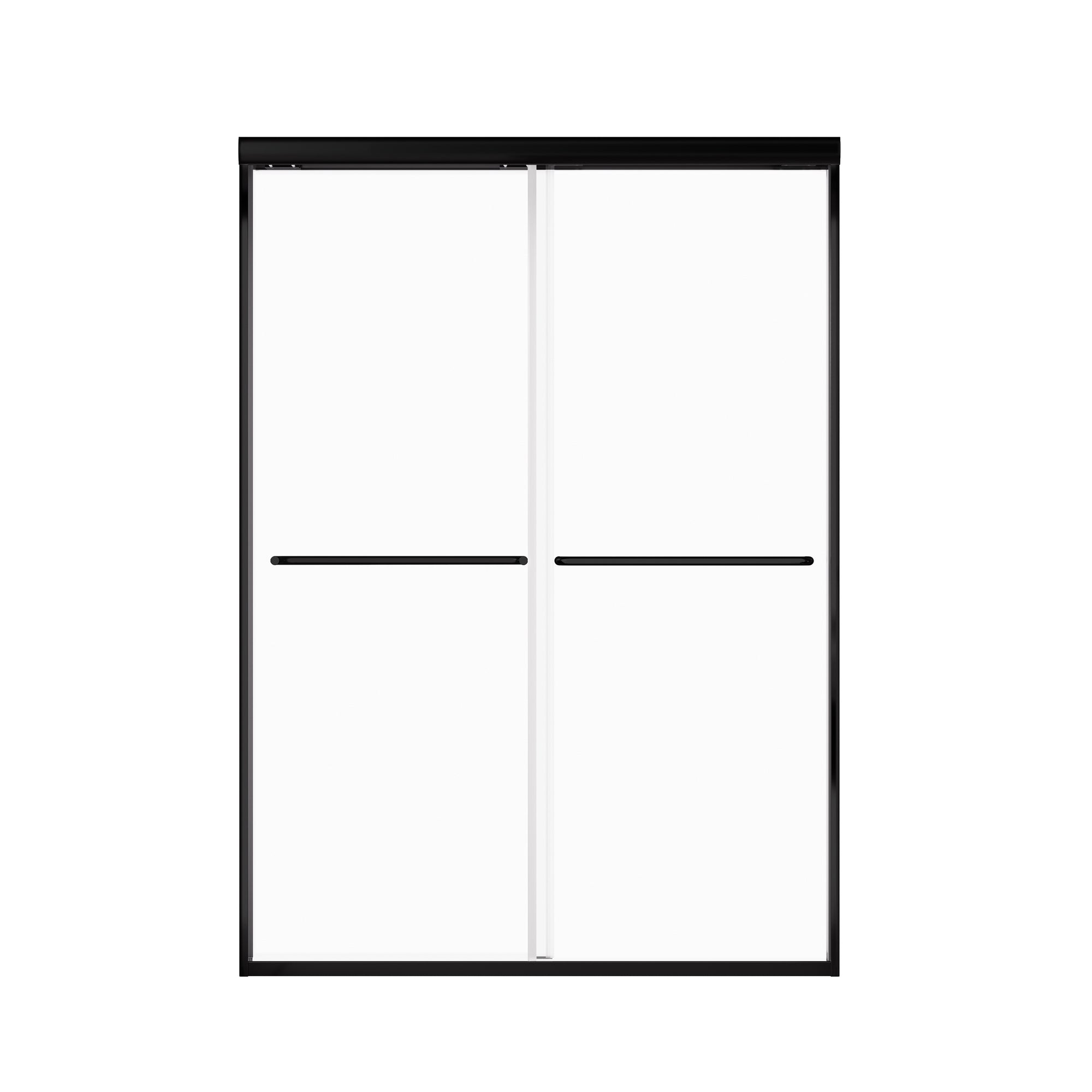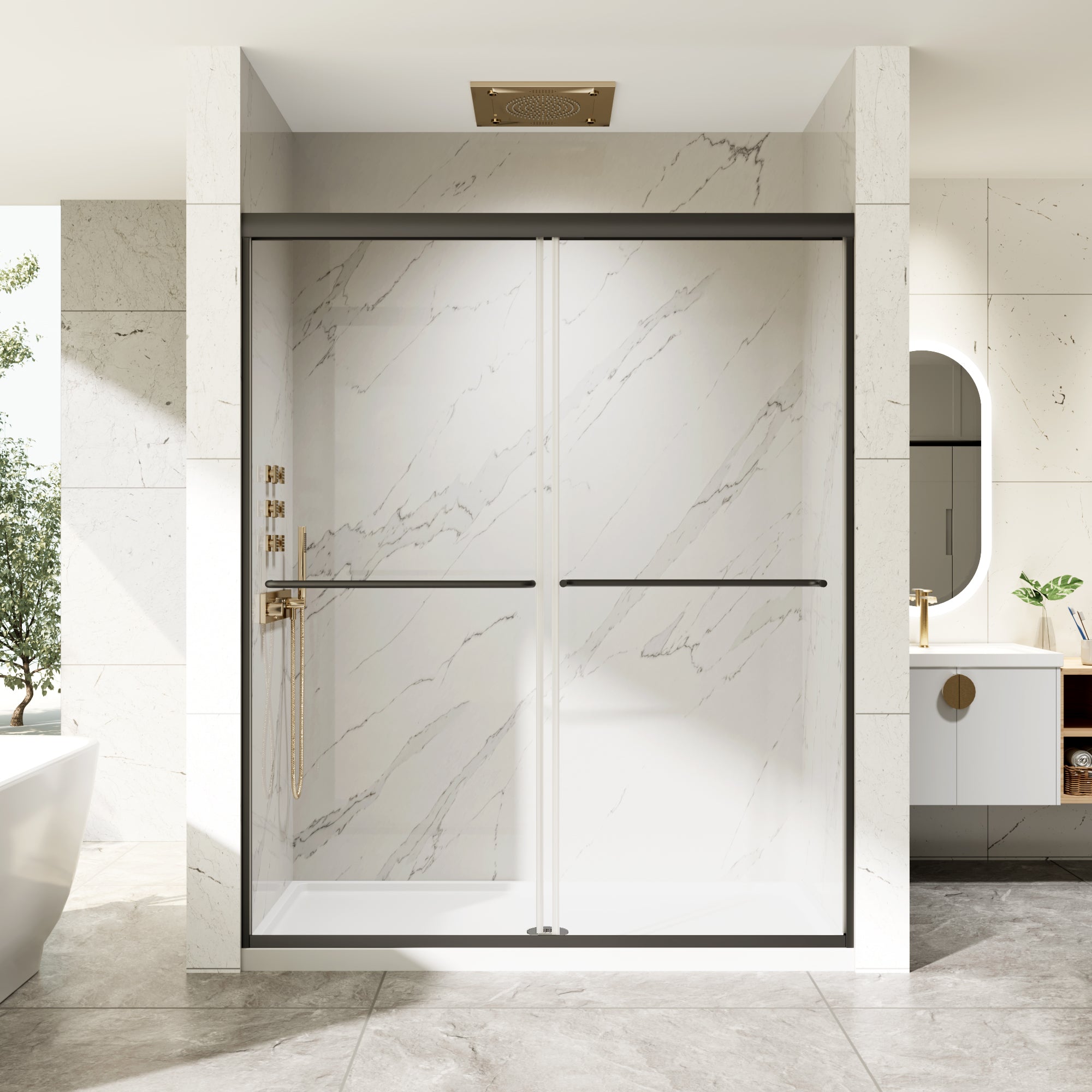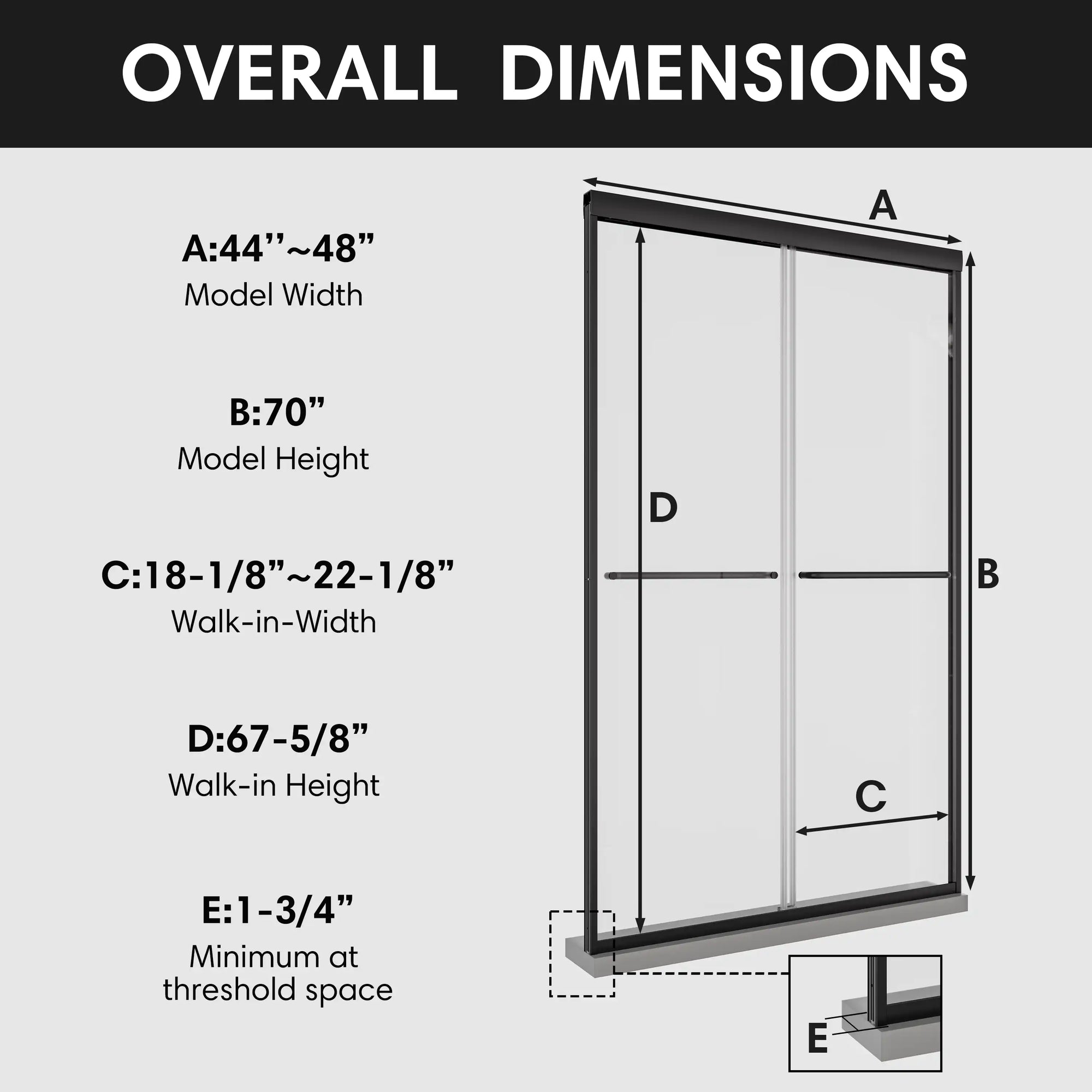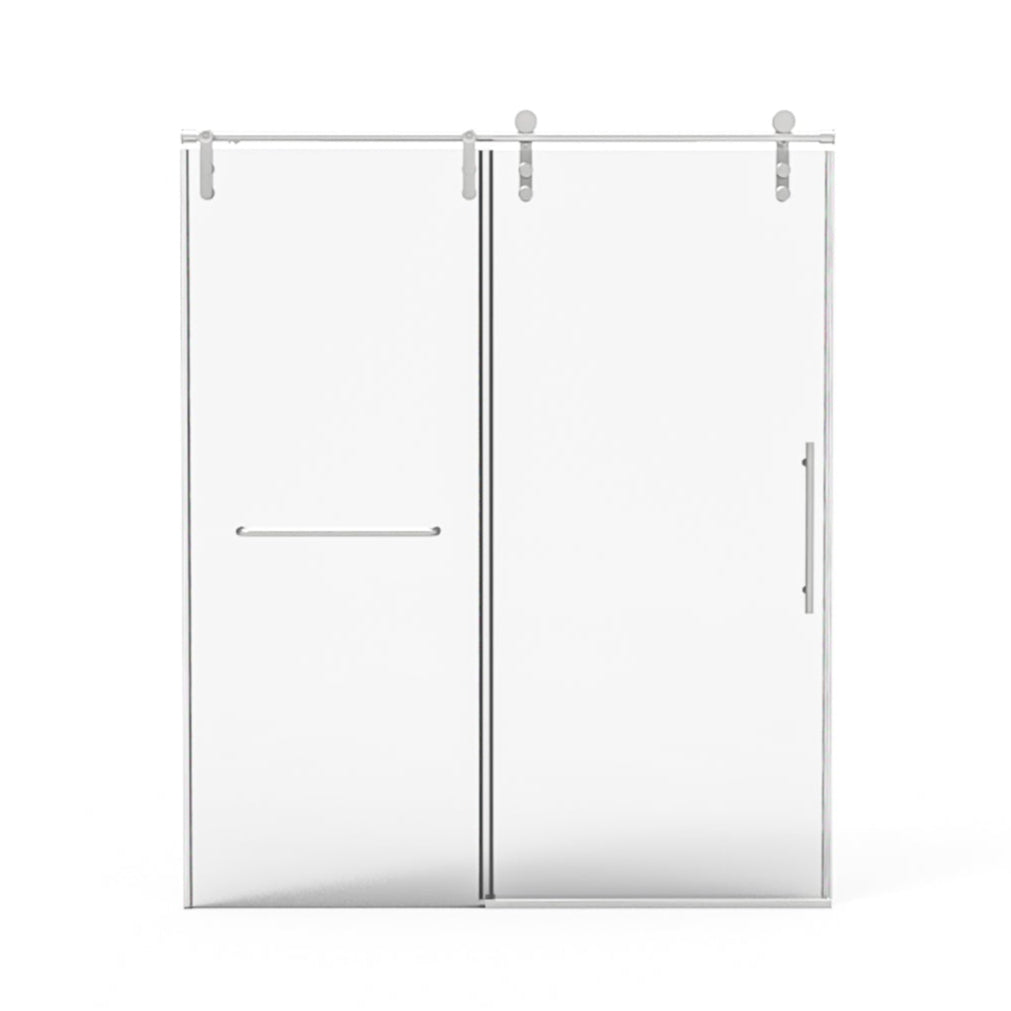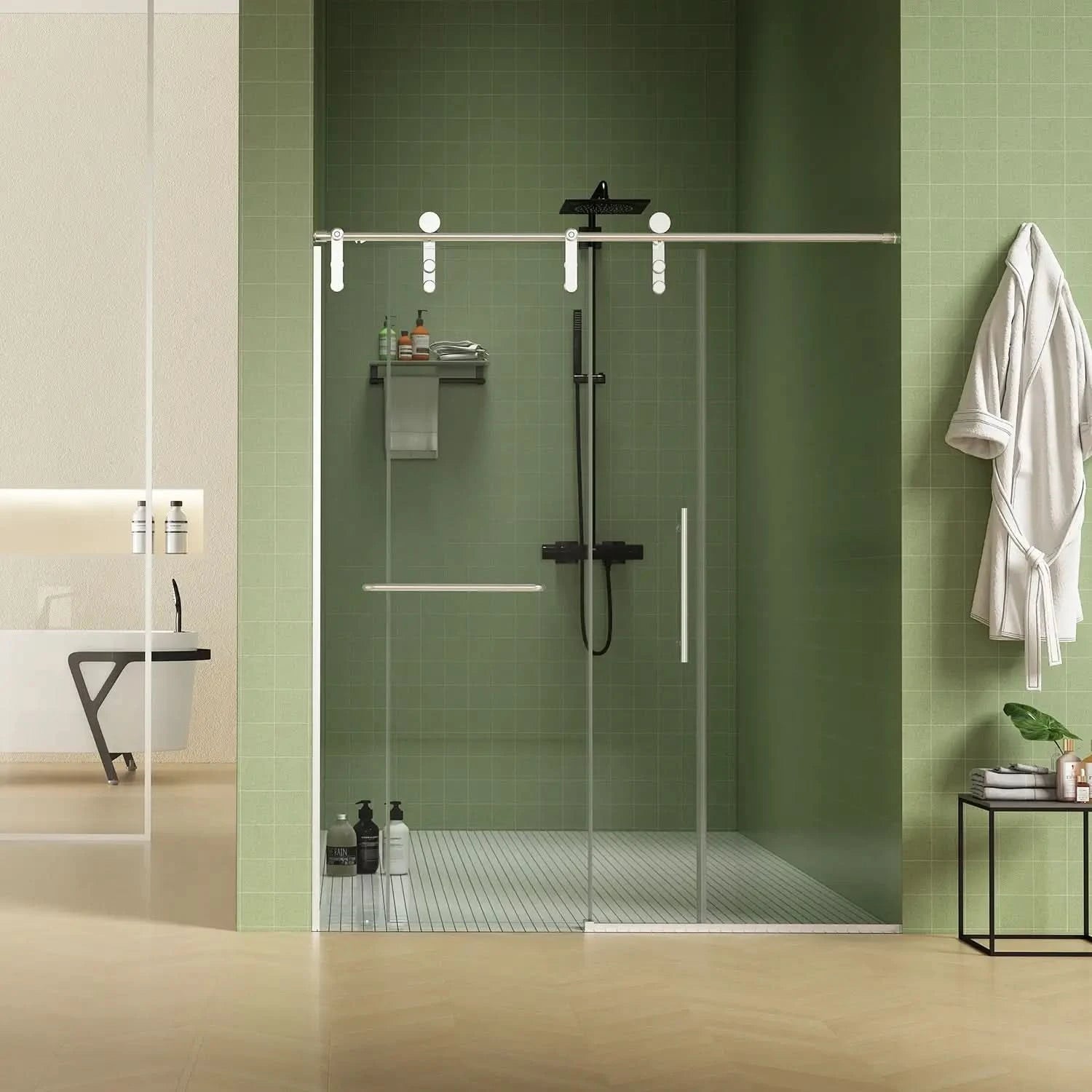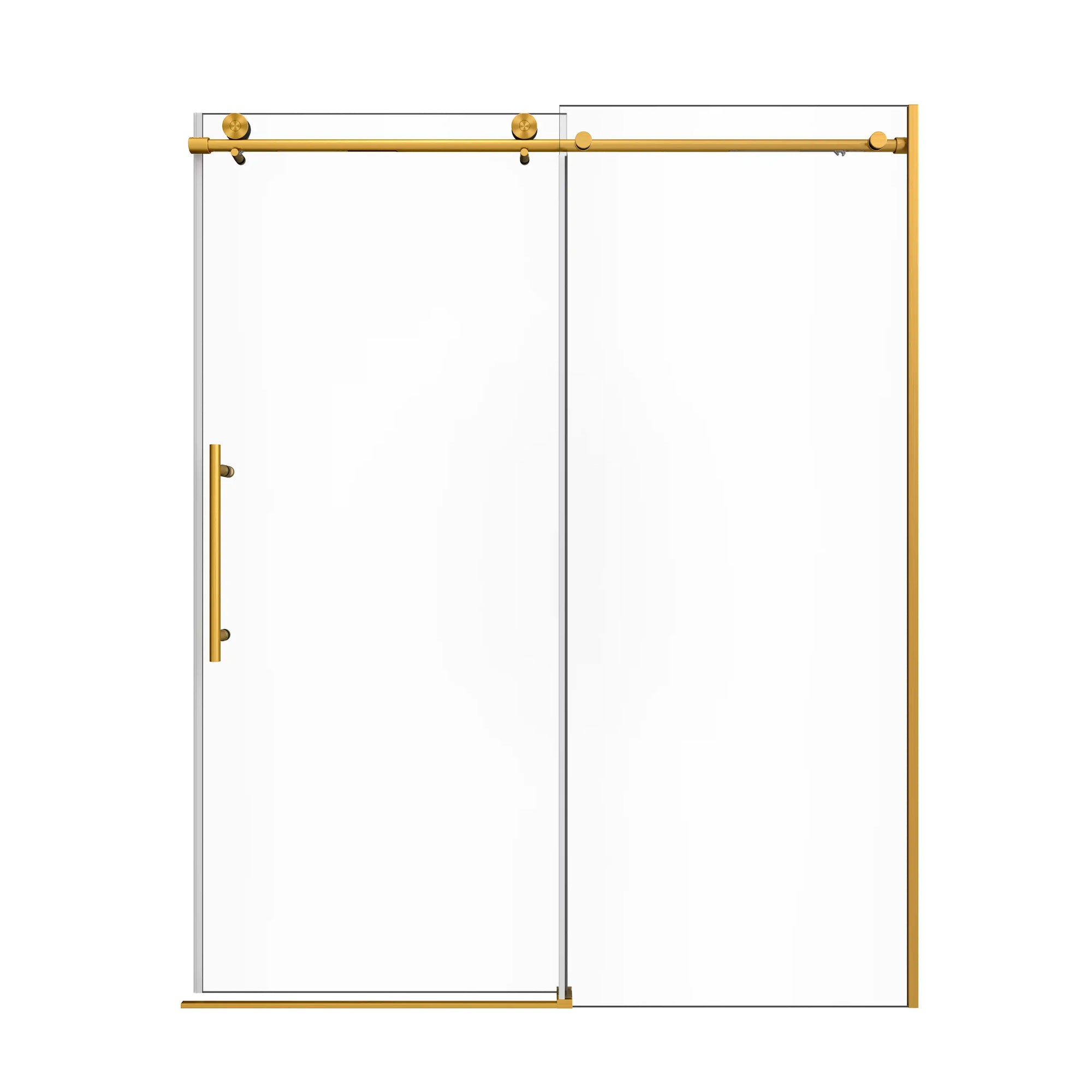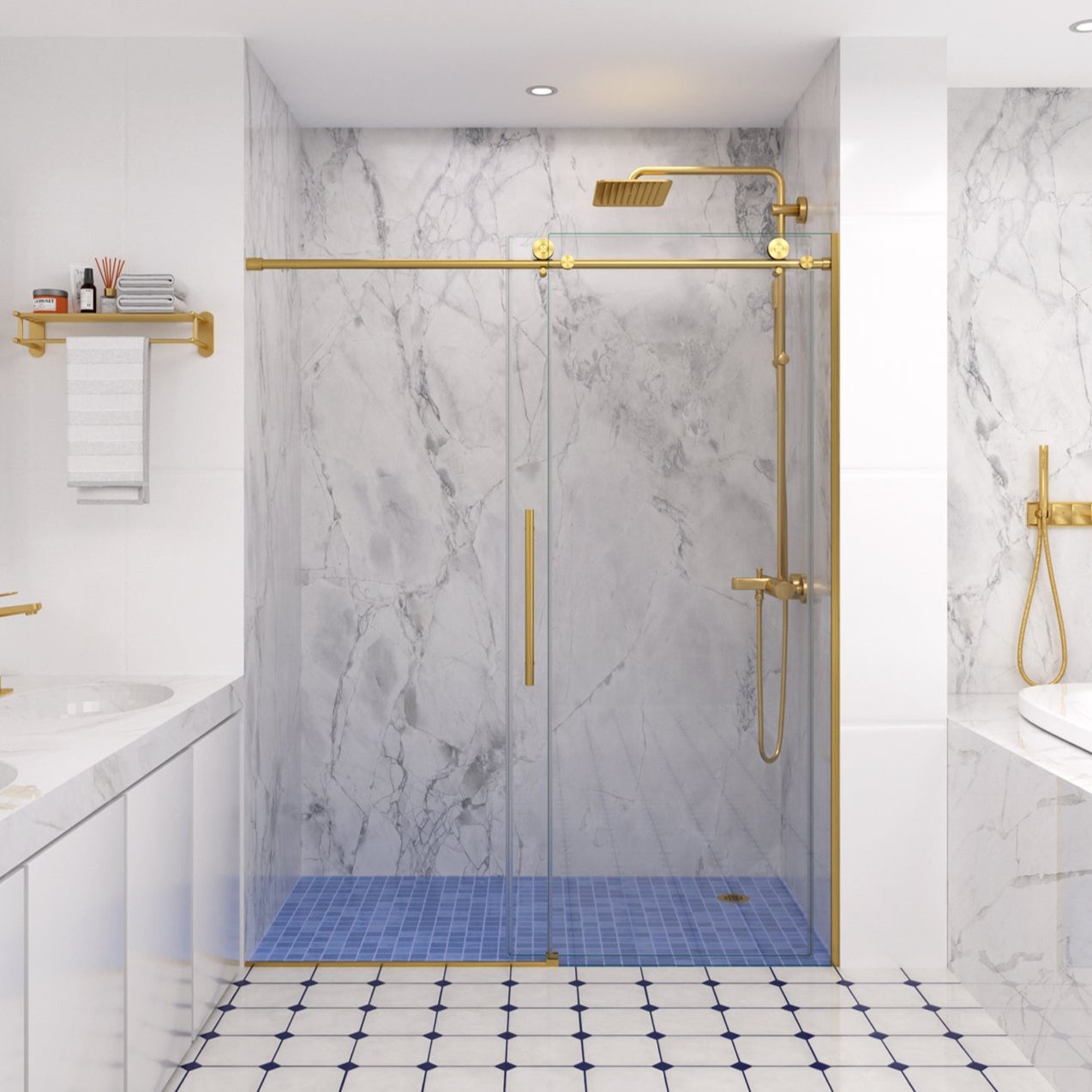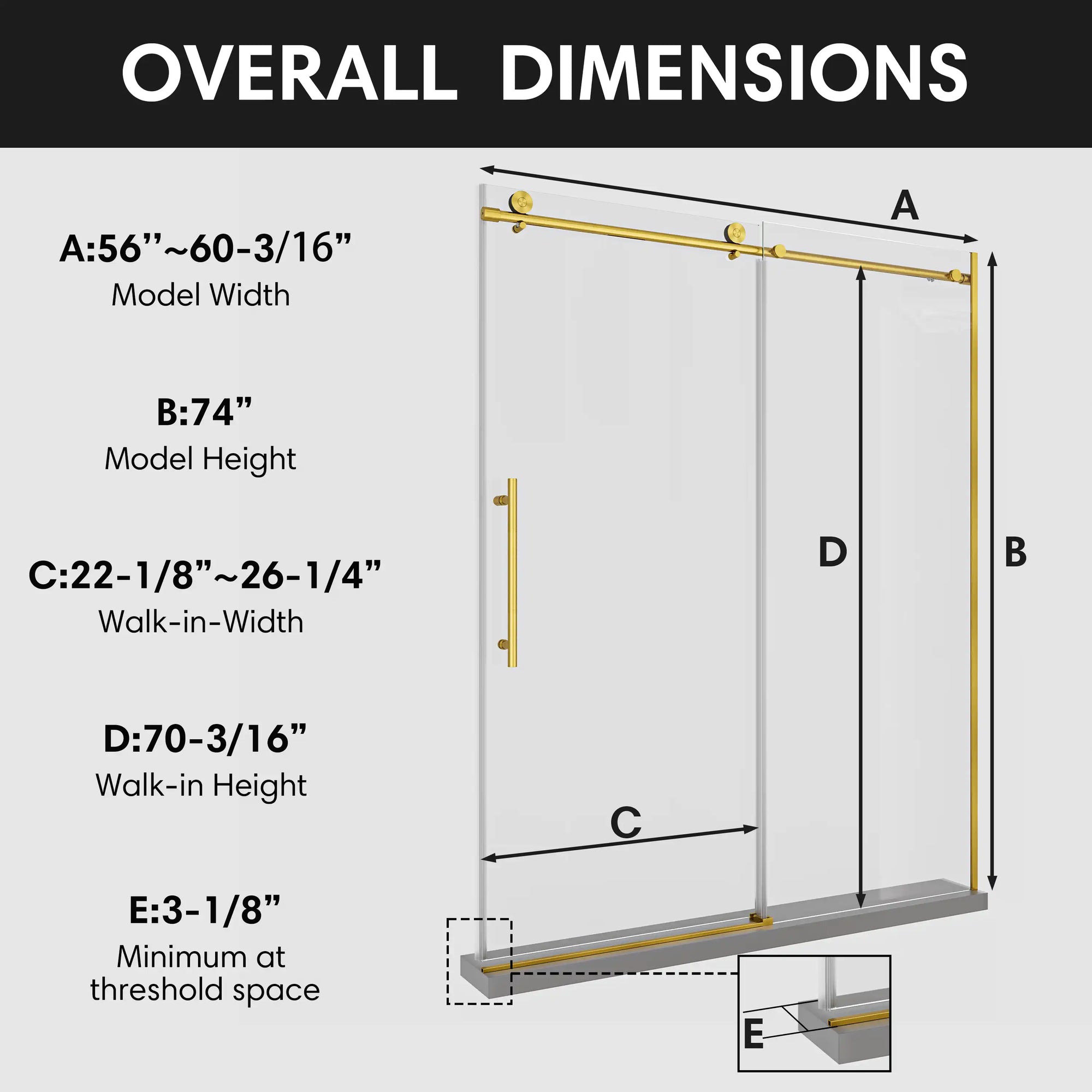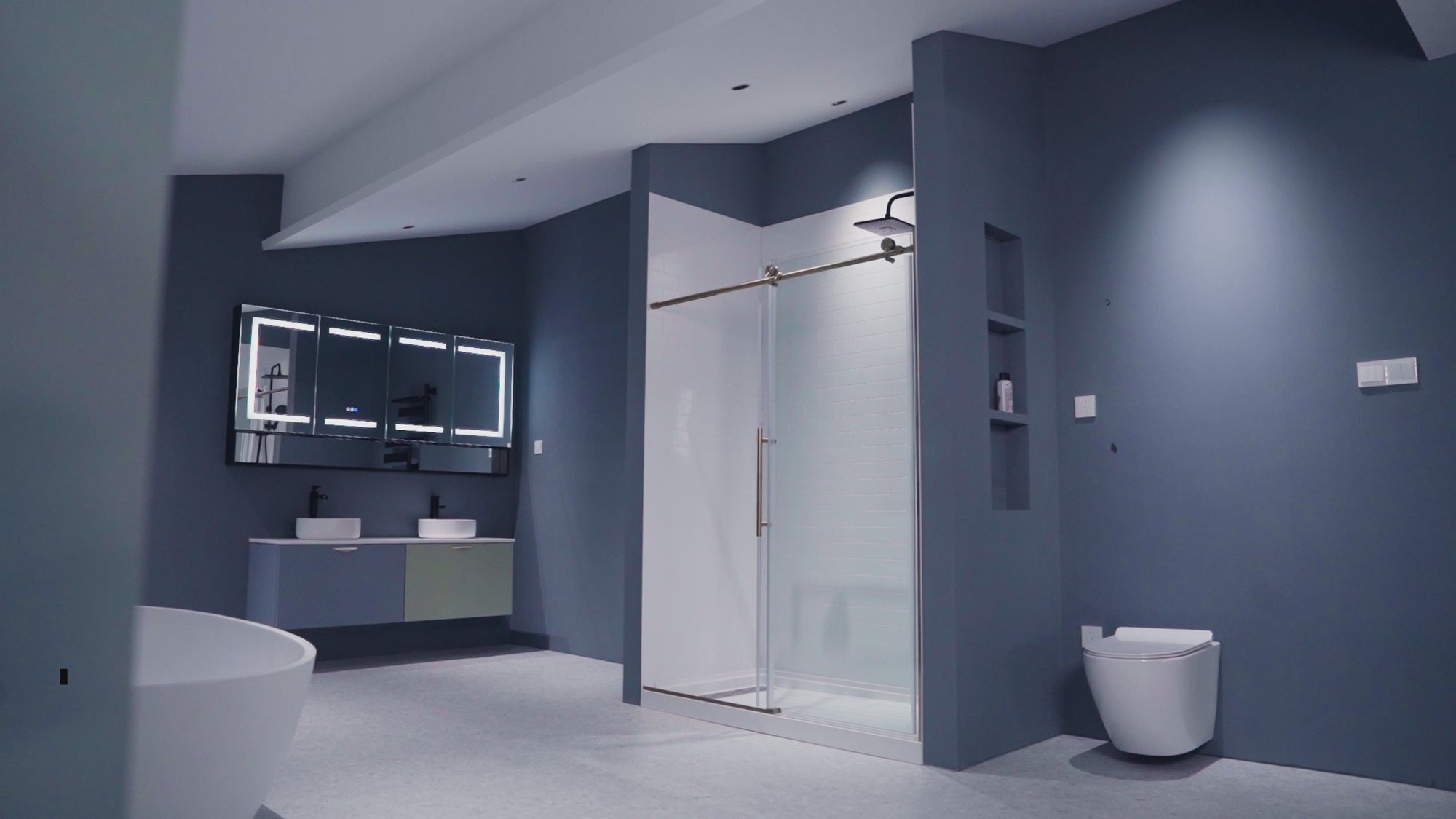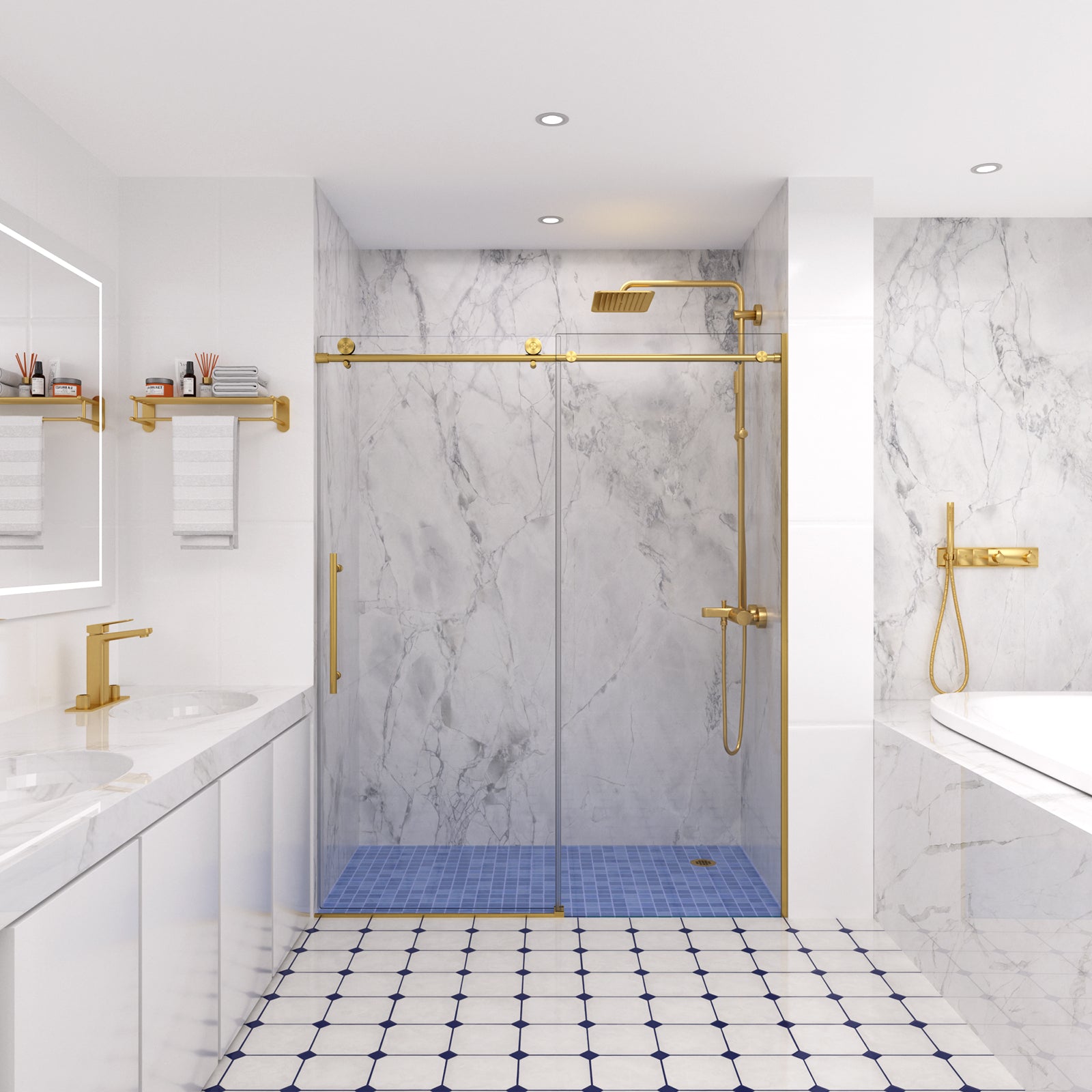Table of Contents
- Shower Doors Explained – What Type Do You Need?
- How Does a Sliding Glass Shower Door Work?
- Real-World Scenarios: Is Sliding Right for You?
- Design and Customization Considerations
- Maintenance, Lifespan, and Upkeep
- Frequently Asked Questions (FAQs)
- Final Thoughts
When it comes to remodeling a bathroom, one of the last creative decisions you often make when bringing a space together is the choice of shower door. It might be just a small detail, but the shower door you decide on can make or break the overall look, feel and functionality of your bathroom.
From among those choices, sliding glass shower doors have come to be a favorite option for some modern outfit all of them facing contemporary baths. They provide modern, clean lines, and space-saving capabilities, as well as practical use. But does a sliding door make sense for your particular bath, in terms of layout, use and style?
In this complete guide, we discuss everything there is to know about the anatomy of shower door design and sliding systems in particular. We're breaking down the major structural elements that create the beauty in sliding glass shower doors — think frames, a top rail and rollers. We want you to be educated and inspired so you can make an excellent decision.
1. Shower Doors Explained – What Type Do You Need?
But let's first step back and consider the range of shower door types available today before we focus on sliding doors. All designs have their pros, both functional and aesthetic.
| Shower Door Type | Mechanism | Ideal For |
|---|---|---|
| Hinged Door | Swings open like a traditional door | Larger bathrooms with plenty of space |
| Sliding Door | Panels glide along a track | Compact bathrooms, modern designs |
| Bi-Fold Door | Panels fold inward like an accordion | Tight spaces, budget renovations |
| Pivot Door | Swings on a center-mounted hinge | Flexible installation, stylish interiors |
| Curved Sliding Door | Slides along a curved rail | Corner showers, modern spa aesthetics |
| Frameless Glass Door | Uses minimal metal framing | High-end, minimalist bathrooms |
Why This Matters:
If you select the incorrect type of shower door, it can make your bathroom less functional, and ruin the surrounding fixtures as well, over time. For example, a swinging door in a tight bathroom can collide with a toilet or vanity, and frameless options applied without careful attention can result in leaky dilemmas. Beginning with the type of door the best place to start to ensure smart structural and aesthetic decisions.
Sliding glass shower doors are one of the most commonly used designs for new and remodeled bathrooms, they're perfect for you if you prefer a stylish, modern look! But their value goes far beyond mere aesthetics. They are systems engineered with each component — from the track to the rollers — working together.

2. How Does a Sliding Glass Shower Door Work?
A sliding shower door is something more than just glass and metal, it's a kind of carefully balanced system. Whether you're planning to install it yourself or hiring a professional, knowing each fundamental element enables you recognize quality — and steer clear of common pitfalls.
A. The Frame: More Than Just a Border
A sliding shower door's frame does more than hang on to your glass door. It is an integral load bearing structure that determines the movement, durability and overall alignment of the door.
What to Look For:
- Heavy-Duty Aluminum Alloy: The frames on a screen are as important as the screen material itself – after all, a screen is only as strong as its weakest link. The thick, sturdy frames on the 2712D use aluminum alloy material that is thicker than the industry average. This helps the door resist twisting and bending even after years of use.
- Full Perimeter Framing: Not all chairs are fully framed to maintain a minimalist aesthetic. But this might sacrifice strength and stability. A full framed door will give you greater strength to the door.
- Water-Resistant Finishes: Whether it's anodized aluminum, powder-coated matte black, or polished chrome, the finish should be less prone to corrosion and wear.
Performance Insights:
A well-designed frame is capable of spreading pressure evenly on the top and bottom tracks. The 2712D has a frame that, along with the top rail, prevents the door from wobbling. That means with regular use several times per day, the door will still snug into the track straight every time. Frame problems like this, when not dealt with properly, may lead to glass forced tension from minor changes overtime, roller cracking, or leaking water.
Think of the frame as the chassis of a vehicle. Everything else—from doors to suspension—depends on it. Without a strong frame, even the best sliding mechanisms will eventually fail.
B. The Top Rail: The Slide Structure Core
Most people get the top rail wrong. A lot of people believe that it is just keeping the door up, when in actuality it's a critical engineering component adjusting for load bearing, realignment and design consistency.
Engineering Considerations:
- Quite simply, Reinforced Extrusion: The best top rails, like the 2712D, have extra reinforcement built in to handle not only the static load of the doors but the dynamic forces caused from opening and closing the doors.
- Noise Reducing Materials: Some top rails are coated or contoured to limit noise during back and forth action, especially when combined with rubberized or polymer-covered rollers.
- Concealed Fastener: Innovative technology hides screws or nails in the top rail to give your fence a beautiful, finished appearance while maintaining strength.
How It Affects Everyday Use:
Top rail is something that is usually ignored until such time that it fails. Installed properly and built using quality materials, the top rail helps to keep the door moving smoothly in place, rather than jerking around each and every time it opens and closes. For the 2712D, not only is the top rail strong and secure, it also interacts with anti-jump rollers for increased safety.
A warped or weak top rail can cause misalignment, grinding noise, or even derailment. Always prioritize structural performance over visual minimalism.
C. The Rollers: Motion with Accuracy
If the frame is the skeleton and the rail is the spine, then the rollers are the joints that help everything move fluidly. The quality of your rollers is going to affect how your sliding glass shower door feels when you open and close it and its sound.
Key Components:
- External Large Rollers: These are visually exposed and often form part of the design aesthetic. In the 2712D, the external rollers are oversized and mounted visibly for an industrial, modern look.
- Inside Small Rollers: Magically located inside the track, inside rollers perform double duty, providing excellent support while helping to keep things on the level by preventing the doors from tipping.
- Standard Design: By a combination of exposed and concealed rollers the 2712D achieves unmatched tractive force while absorbing vibration and dampening track wear.
Anti-Jump Mechanism:
A distinctive feature in elevated models such as the 2712D is the eccentric anti-jump mechanism. This adjustable part keeps the roller and rail on a safe and consistent distance from each other. This reduces the chance of derailment, even in case of minor installation imperfections and when doors are forced slightly open.
User-Focused Benefits:
- Effortless Sliding: No sticking or grinding
- Extended Service Life: Reduced track and roller wear
- Ease of Maintenance: Rollers can typically be removed without full frame disassembly
Precision rollers turn a potentially clunky system into a high-end user experience. Invest here, and you'll notice it every day.
3. Real-World Scenarios: Is Sliding Right for You?
The nitty-gritty details are important, yes, but let's look at some practical considerations. Who are sliding glass shower doors best for, and when is another style a better option?
Sliding Glass Shower Doors Are Ideal For:
- Apartments and Condos: Designed for space-saving to make the most of any room.
- Guests' Bathrooms: Use friendly, contemporary and low maintenance.
- Renovations on a Budget: Cost-effective options exist with high design impact.
- Industrial or Minimalist Design Style: Expoesed rollers and fashional design elements create a modern style.
May Not Be Ideal If:
- You Require Maximum Accessibility: While sliding doors create a wider open space for movement, swing doors have openings that tend to be narrower.
- Walls or Floors Are Severely Uneven: While adjustable rollers may aid, severe shortfall and mismatch must be corrected by a professional.
- You Prefer Wide, Open Entry Points: Sliding panels only open to half the total width at most.

4. Design and Customization Considerations
A high-functioning sliding door is important—but so is how it looks in your bathroom. Thankfully, most modern sliding glass shower doors are designed with both form and function in mind.
Customizable Elements:
- Type of Glass: Clear, frost, textured, colored
- Frame Finish: Matte black, chrome, brushed nickel or bronze
- Handle Styles: Bar handles, knob pulls, recessed grips
- Door Height & Width: Full height or custom sized to suit tub or shower application
For instance, the black metal frame and exposed rollers of the 2712D give the door a solid industrial quality, while the clear glass and the whisper of its movement bring in a luxurious note.
You need not sacrifice performance for beauty — or vice versa. That combination is available in the best sliding doors today.
5. Maintenance, Lifespan, and Upkeep
One of the unsung benefits of sliding glass shower doors is that — assuming they are well-engineered — they require very little maintenance.
Regular Cleaning:
- Glass: It's the easiest type of surface to keep clean. Squeegee daily, to avoid water spots and soap scum.
- Tracks and Rails: Weekly, wipe with a soft cloth and mild cleaner.
- Rollers: Check for debris or wear each month. Most higher-end systems are easy to pop out for a scrub.
Replacement Cycles:
- Rollers: You might need to replace them around every 3-5 years if you're a regular user.
- Seals and gaskets: They need to be replaced when they begin to turn brown, harden or leak.
- Frame and Rail: With the good stuff, 10-15 years, easily.
Look for models that can be easily disassembled. This saves on operation costs and makes maintenance easier.
Frequently Asked Questions (FAQs)
1. Is it hard to keep sliding glass shower doors clean?
Not at all. High-quality glass coatings and an easy-clean track are used in most of today's doors. Monthly wipe-downs and roller checks every few months are all it takes to ensure your system is running smoothly.
2. Can I install one myself?
It can be DIY for the handy homeowner, especially if the unit is a pre-frabricated model. Professionally fitting is recommended for heavier, custom-fit systems, and especially so if you have tiled walls or off-angle corners.
3. Is framed or frameless sliding doors better?
Framed models are more stable and easier to install. Frameless options offer a more minimalist look, but they need to be installed exactly, and could potentially leak.
4. How can I tell if a slide door will work in my bathroom?
Take wall-to-wall measurement, and confirm that the threshold is flat, and there's sufficient room for at least half the door to slide. Adjustable drum screws are a way to make up for some of those alignment problems.
5. Do sliding glass doors leak water?
Most well-installed doors with full-length seals and overlapped panels don't leak at all. Anti-jump and spot eccentric roller systems provide snug fit and prevent vibration gap when water is flowing.

Final Thoughts
Glass shower doors sliding marry luxurious design and strong engineering. But purchasing "a sliding door" isn't enough to ensure a great experience — you also need the correct frame, top rail and roller system that will work together to ensure years of performance.
By understanding the components and mechanics behind the system, you become an empowered buyer—able to distinguish between low-end gimmicks and high-end craftsmanship.
If you are considering contemporary, open-wheeled systems like the Ace Decor 2712D, you are buying more than just a door—you are buying design consistency, daily ease of operation, and lasting value.
Want to learn more? Watch for our follow-up article:
- "Shower Door Glass Shattering: Why Tempered Glass and Safety Film Are Essential"
- "304 Stainless Steel vs. Chrome-Plated Accessories"
- "Things to Consider before Buying Glass Shower Door Handles"
- "How to Keep Glass Shower Doors Clean: Daily Tips & Easy Fixes"
- "Best Paint for Metal Shower Door Frame: Waterproof & Durable Options"
- "Bathroom Mirror Cabinet Single Door: Minimalist Design for Small Bathrooms"
- "Seal Shower Door Frame Right: 4 Crucial Checks Before You Start"
- "7 Stunning Bathrooms That Nailed Glass Shower Enclosures Frameless"
- "Avoid These 8 Common Shower Door Installation Mistakes for a Perfect Fit"
- "Shower Door Wall vs. Shower Curtain: Which Is Better for Your Bathroom?"


